2 Minute Summary
Search Engine Optimization (SEO) is the Main factor to rank your content on google as there is a lot of content on google but what appears on the first page of the google in specific Keyword you research is basically the magic of SEO. It consists of two types- On-Page SEO(Quality of content ) and OFF Page SEO(Backlinks). Their are also SEO for e-commerce in which you can do SEO for a single Product also and can rank it on google. Their are many Tips and Tricks for SEO Legal and Illegal both like Black Hat, White Hat by which you can rank your content which is included in the blog also it gives you all historical updates for SEO.
If you are new in the Search Engine Optimization (SEO) world, you’ll love this guide.
But why do we want to learn about Search Engine Optimization (SEO)?
Why Should You Care About Search Engine Optimization (SEO)? Let’s clear this first.
Do you know how many websites exist in the world?
More than 1,883,637,867 online and the number is increasing.
Did you know that more than 409 million people on WordPress Platform view more than 23.6 billion pages each month?
Can you imagine?
Did you know that each month bloggers produce 69.5 million new posts? This is insane
It is estimated that by 2019, the global traffic on the internet will reach 2 zettabytes or 2 billion-billion bytes for the year.

Now if we want to capture the attention of our target audience we need to create a blog that will leave them wanting more.
To rank our blog/website, Search Engine Optimization (SEO) is an effective way
But what does Search Engine Optimization mean?
If you are new to Search Engine Optimization (SEO) and don’t know what it is.
Then, Continue reading this blog. This blog is for seo for beginners to seo for Advanced.
Consider Search Engine Optimization (SEO) as oxygen for your online presence. It’s FREE.
Think of Search Engine Optimization (SEO) this way, If a Consumer-focused Content marketing program is the McDonald’s Burger then SEO is the tomato sauce: it only enhances its taste.
From the world’s prominent brands to personal websites, Search Engine Optimization (SEO) is an essential tool to drive traffic, acquire new customers and to build an online presence.
I hope you do know SEO is Search Engine Optimization. But what do we need to optimize?
Well, it can be your content, design, and links.
According to Wikipedia, Search engine optimization (SEO) is the process of affecting the online visibility of a website or a web page in a search engine’s unpaid results ( can be referred to as “natural”, “organic” results)
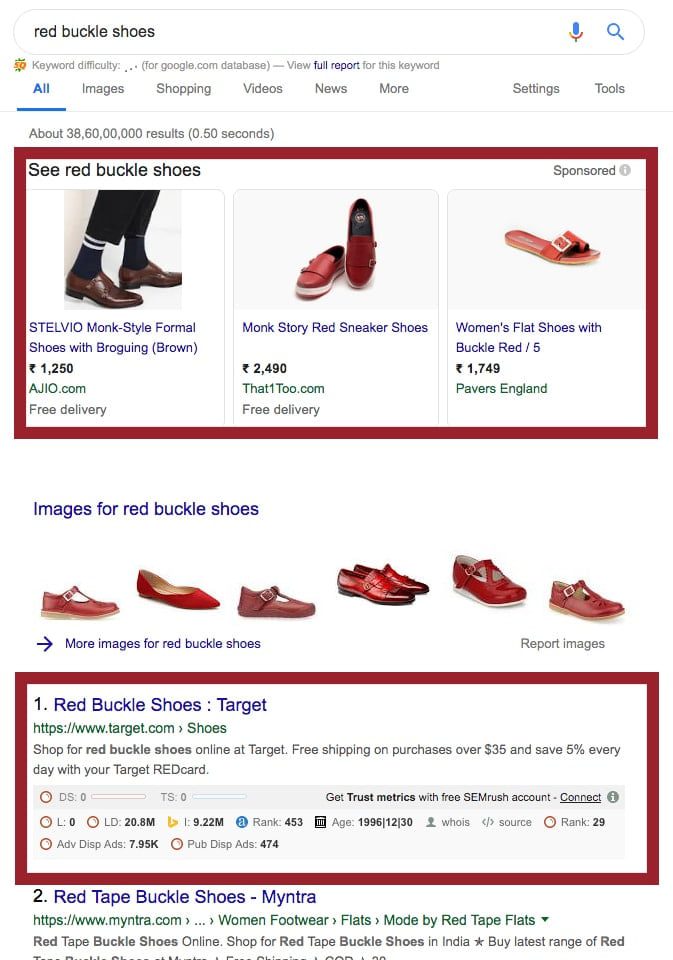
Lets Start SEO Guide For Beginners from Basic to advance
What’s in it for me
- Keyword Research
- On-Page SEO
- Off-Page SEO
- Ecommerce SEO
- Video SEO
- SEO Tricks
- Black Hat SEO
- SEO Updates
What is Search Engine Optimization (SEO)?
The first lesson of SEO Guide for Beginners is Basic of Search Engine Optimization (SEO)
Search engine optimization (SEO) is the process of optimizing your online content so that Google (any search engine) thinks that you are the best in your field and shows your content at the top.
Let me break it down for you.
Search Engine Optimization (SEO) is the mayonnaise that you need to put into your sandwich for better results whenever someone searches for that particular keyword.
Talking about Search Engine Optimization (SEO), there’s a connection between Google (any search engine) and the searcher.
If you have your brand that sells shoes and you want Google to show your website whenever someone searches for Red buckle shoes. ( I should take patent for this keyword :p)
Search Engine Optimization (SEO) is the first thing you need to make Google showcase your website at the top for some specific keywords. (for eg – Red Buckle shoes in Delhi ) .
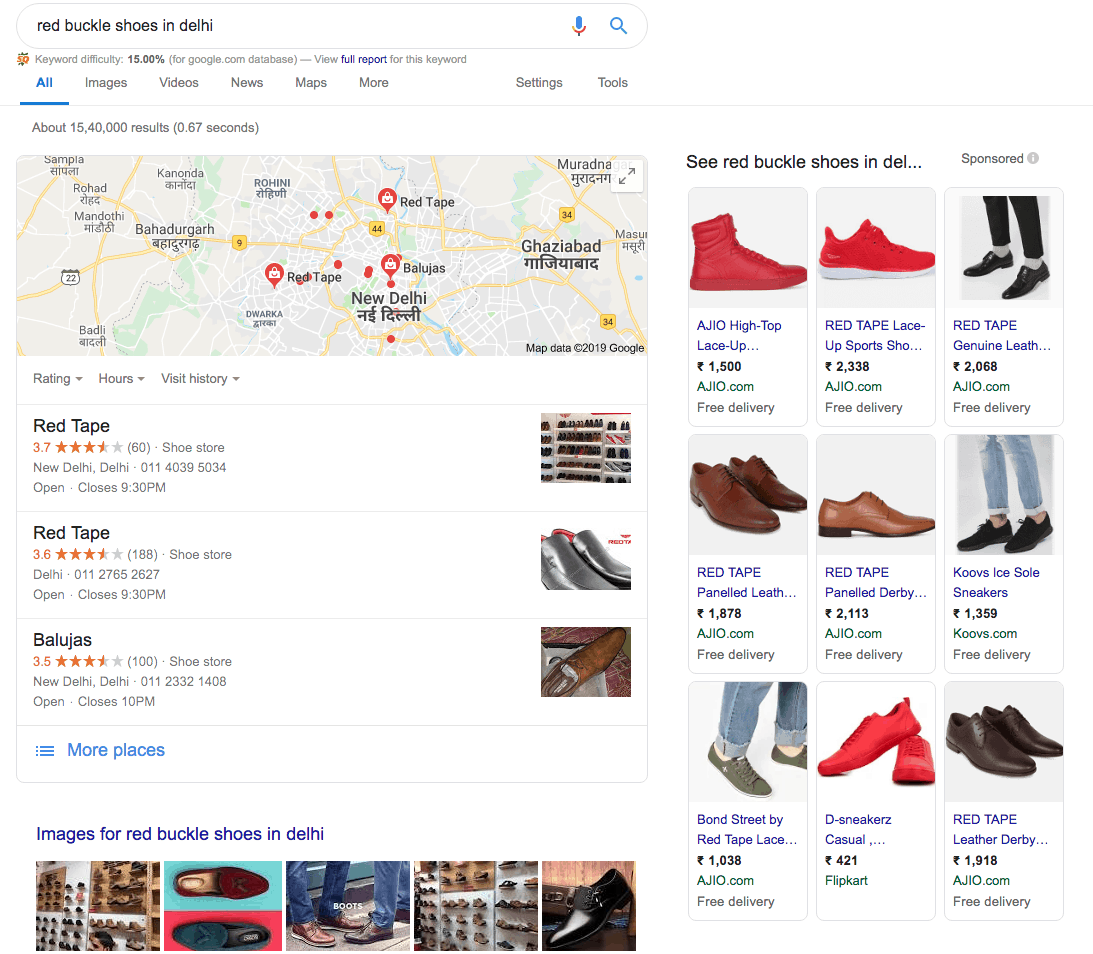
Before we move further into Search Engine Optimization (SEO)
These are some videos you must see.
Why?
Once your basics are crystal clear then we move on towards the advanced level.
How Google is getting smarter and smarter every day.
I hope you got the basic of Search Engine Optimization (SEO) in SEO Guide for Begginers.
Keyword Research
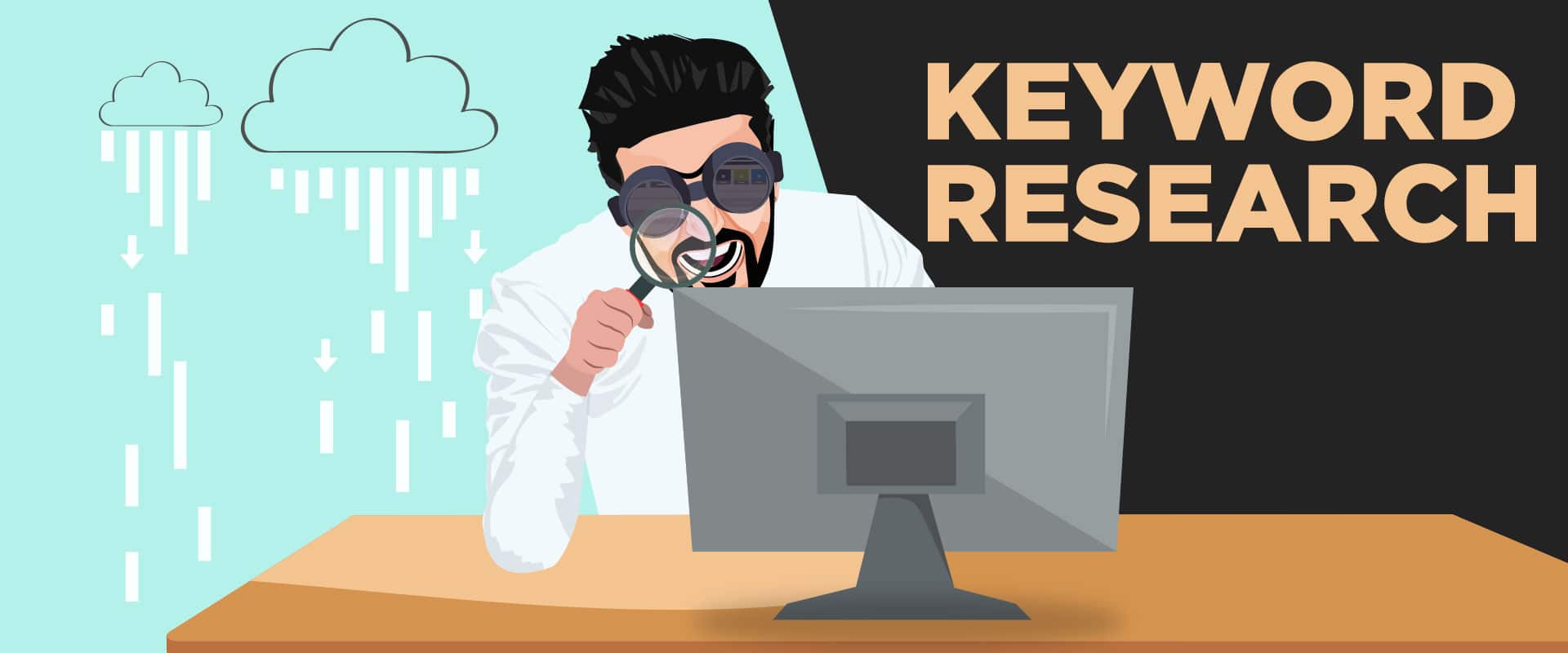
The first most important thing in Search engine optimization is keyword research
Keyword research is just like asking your girlfriend where does she want to eat. Seems Impossible right?
But with this guide, we’ll make it possible.
So How do you come up with keyword ideas?
How to find the Best keywords?
Keywords are the roadmap for your successful Search Engine Optimization (SEO) journey, they guide us on how to reach our destination.
According to an article published in Forbes, Search Engine Optimization (SEO) is not dead and keyword research is still as significant as ever.
When you are aware of what people are looking for, you can win the game.
Ask Yourself These Questions:
- What kind of products and services do I provide?
- What words can my target market use to find these products and services?
- What problems am I targeting to solve?
- What questions might they be asking online?
- What kind of keyword variations people might use? (i.e., plurals, common misspellings, synonyms)
If you have the answer to these questions, you’ve become an expert in keyword research already.
Now we need to check whether People are searching for World cup or World cup 2019 or World Cup Cricket 2019?
How do we find this?
Bingo!
Keyword Research Tool
My favourite tools include:
- Google Ad’s Keyword Planner
- Ubersuggest
- SEMrush
We can expand our keyword research to even more extent
- Google’s search bar
- Quora
- A Page-level analysis in Google Search Console
- Google’s related searches
- Google Trends
- Your customers
- Social media groups and comments
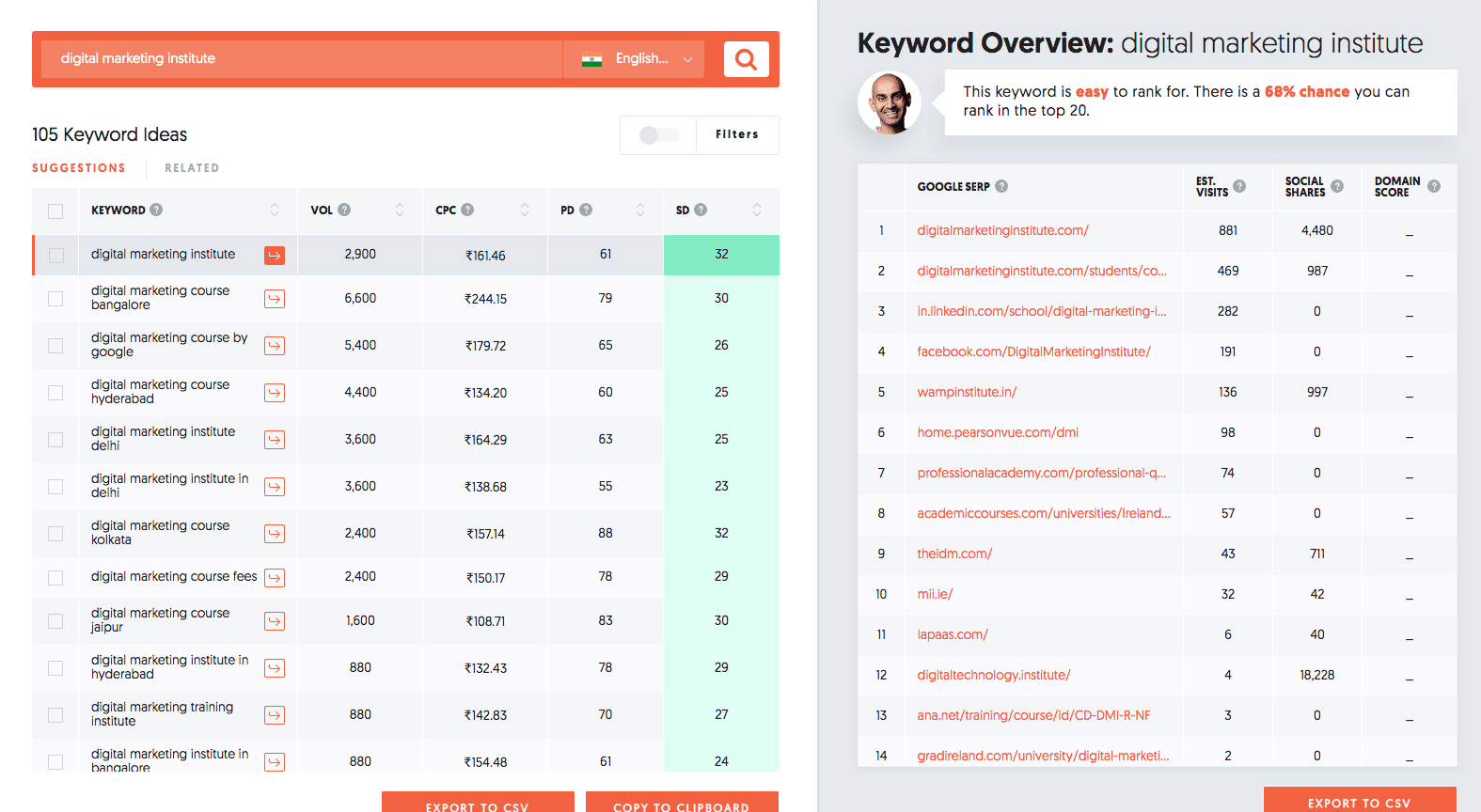
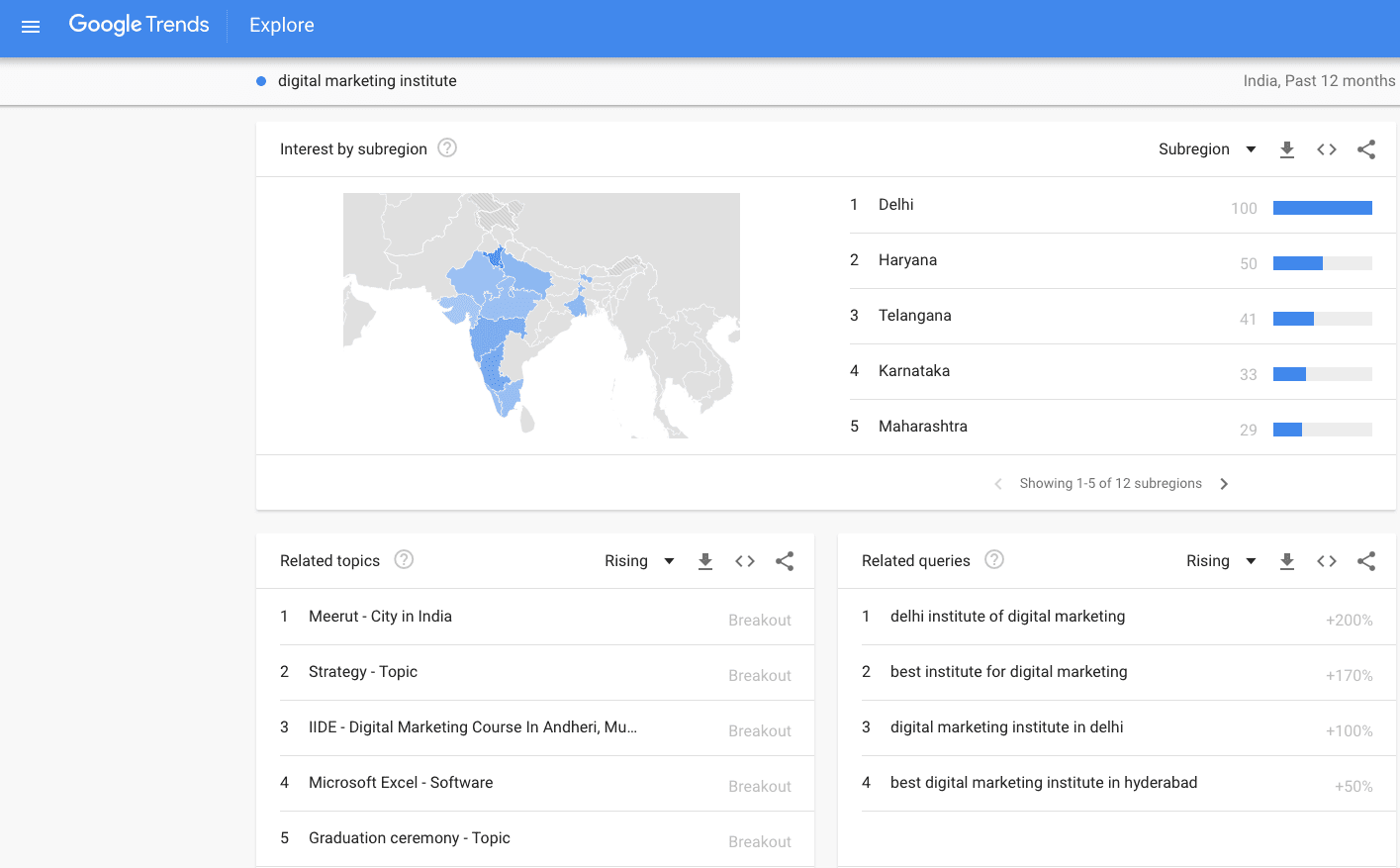
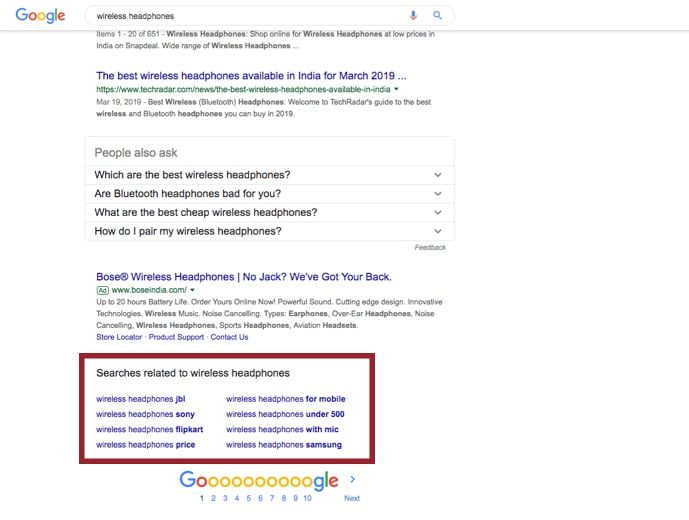
You can get enormous ideas from Quora as well.
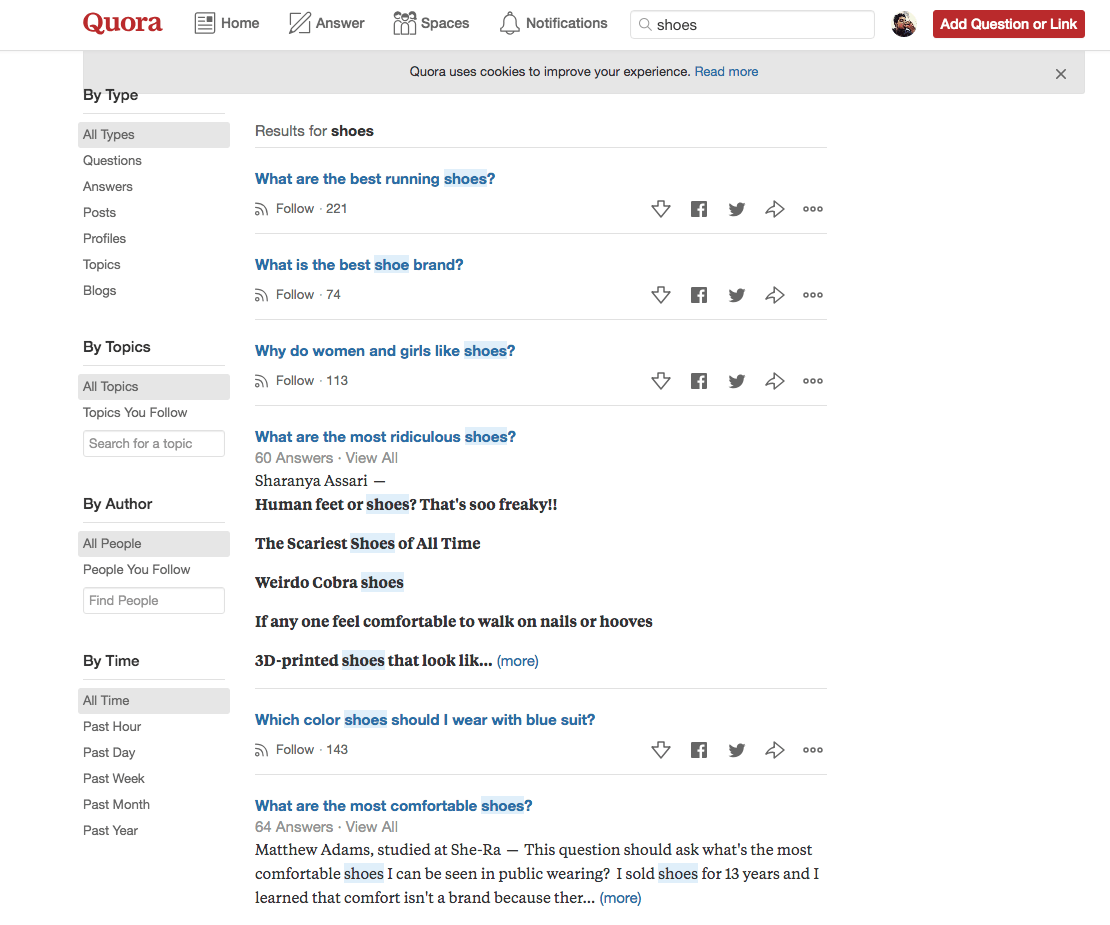
Copy the Competitor’s Strategy for fresh content.
- Ahrefs’ Content Gap
- SEMrush’s gap analysis
- SpyFu
Keyword research is just the doorway to your Successful Search Engine Optimizations (SEO) Campaigns in helping your website earn more traffic and leads. The rest depends on your landing page and many factors.
Let’s discuss Search intent.
People have an intent before they search for anything on google like why are they searching? Do they want to answer a question or want to know the answer or want to buy something?
Google has identified four main types of search queries:
Knowing phase:
In this intent, a person wants to know about something like
What is digital marketing?
Career after digital marketing?
What is SEO?
Doing phase:
Best Digital marketing institute near me
Best Seo service in Delhi
Best mobile phone under 50,000
Website analysis phase:
Youtube.com
Google.com
Visit in-person phase:
Plumber service near me
Interest- gather-research-define problem-exclude-commit
I hope you got all the information related to Keyword Research in Our SEO Guide for Beginners blog.
On-Page SEO
“Content is King”
The quote “content is king” is originally from an essay that Bill Gates ( Microsoft founder ) wrote in 1996.
I always say this in my YouTube videos that content is the king.
“Execute your content in such depth that no one has written in the whole marketplace. If you succeed in this, trust me you’ll be the king of SEO” – Sahil Khanna – Founder of Lapaas
According to an article published in Forbes, Content is for more than just marketers.
Even paid media – advertising – everything depends on content.

Let me ask you this question?
Does your content have a context or you are just stuffing words?
Content can be found everywhere on the internet.
We are talking about qualitative content.
Unique, high-quality content is significant for a good ranking on Google. Earlier, websites were able to achieve a high ranking just by stuffing keywords. Since then, Google has become smarter with the help of it’s AI(artificial intelligence) and updates like Panda, Penguin, and Hummingbird.
According to some experts content of a website is one of the most important factors for ranking on Google.
In content marketing, the quality of the content provided will decide your success in Search Engine Optimization Industry.
Indexing/Crawling :
Search Engine Optimization (SEO) is a deep ocean. To understand Search Engine Optimization (SEO), we should know some basic Search Engine Optimization (SEO) terms.
Crawling and indexing are two such terms.
If you have been in the web world, you might have heard the words: Google Crawling and Indexing
What is crawling?
Just like when a baby crawls, to go somewhere.
When Google visits your website/blog for tracking purposes. This process is conducted by Google’s Spider crawler.
Before you search Red buckle shoes :p, web crawlers gather information from across hundreds of billions of webpages and organize it in the Search index ( it ranks them accordingly).
They crawl from link to link and bring data about those webpages back to Google’s servers.

When Web crawlers visit all the existing websites, they use links on those sites to discover other pages. Google software pays special attention to new sites, changes to existing sites and dead links. They determine which sites to crawl, how often and how many pages to fetch from each website/blog.
Google offers Search Console aka Webmaster tools to give you an overview of the process of crawling, through analytics you can maintain your pages accordingly. You can request a crawl using “Robot.txt File”
Check the robot.txt file of Facebook at www.facebook.com/robots.txt.

Here’s a sample robot.txt file with rule 1 and rule 2.
Rule #1 User-agent: Googlebot Disallow: /Googlebot/
Rule #2 User-agent: * Allow: /
Let me explain:
1- User-agent “Googlebot” won’t crawl the folder named https://example.com/nogooglebot/ If there are any folders that you don’t want Google to crawl, you can take advantage of this feature.
2- User agents excluding Googlebot is allowed to crawl the whole site.
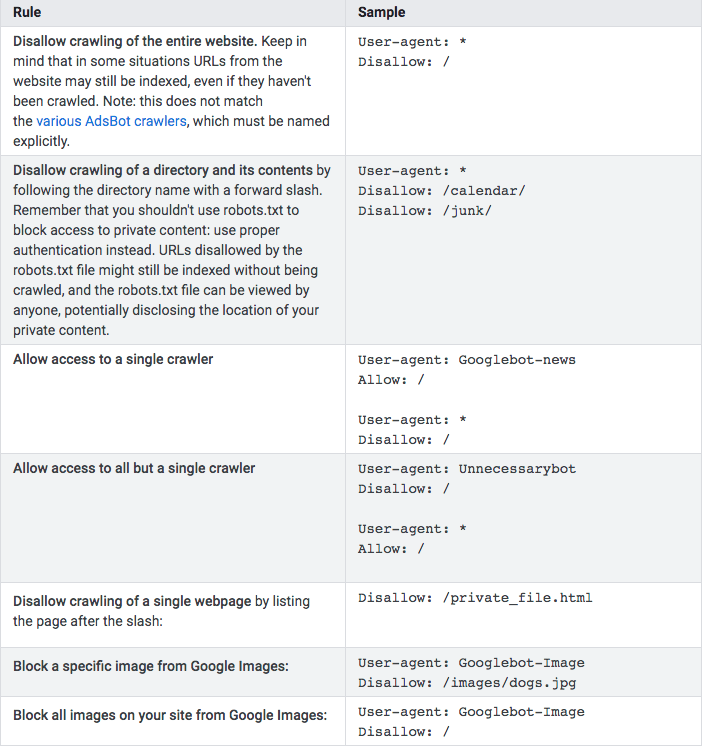
That is why we create sitemaps, as they contain all the links in our blog/website and Google’s bots can use them to look deeply into our website/blog.
What is a Sitemap?
In simple words, a Sitemap is an XML file that is the information of your individual webpage’s URLs. This file should be easily discoverable in your site for search engine crawlers.
Google provides Google Search Console aka Webmaster tool to give site owners choices about how Google crawls their site: They can manage this process, can request a recrawl or can command web crawlers not to crawl a certain webpage using a file called “robots.txt”.
How to create a sitemap?
Now let’s talk about indexing.
What do we need to index?
After crawling has been performed on certain webpages, the results get put onto Google’s index (i.e. web search).
So indexing is the addition of web pages into Google search.
The Google Search index contains hundreds of billions of pages. Just like the index section in the back of the book i.e Collection of every word seen on every web page we index.
A Good approach to rank high in search engines to let only the main parts of your blog/website be indexed.
There is no need to index unnecessary archives like tags, categories, and all other useless pages.
The fundamentals of Search by google :
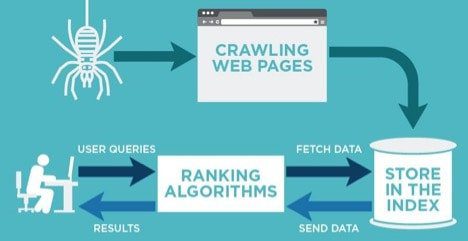
UX Signals :
What’s UX? User Experience.
Why is it important to pay attention to UX for ranking or SEO success?
But how do we know the experience of our users?
Google is smarter than you think. It’s an AI algorithm called RankBrain that can tell whether your user likes your website or not.
Rankbrain, the third most significant ranking factor to Google was launched in October 2015 and it brought UX to the forefront of the search.
RankBrain is driven by these metrics, such as:
- Organic CTR (Click through rate)
- Dwell time (average time spent on a website)
- Bounce rate (percentage of a visitor to your website who navigate away from the site after analyzing only one page)
- Pages per session
These metrics tell Google if the visitor enjoyed your content on your website or not.
Google’s main aim is to provide good quality content to it’s a user so if your content is comprehensive enough that users visit your websites frequently, your page may rank high in search results.
If the user experience is appealing. Then you can expect a serious ranking boost.
Otherwise, RankBrain will throw your website in the trash.
That’s why so-called “UX signals” are significant for Search Engine Optimization (SEO) right now.
UX and SEO they belong together. Every Google Update is focused on Better User Experience. We’ve observed many chances so far in the search engine result pages like a rich snippet, algorithm updates that clearly show how important UX is for Google.

As a digital marketer,
I can no longer think of just the content and the keywords on the website when it comes to Search Engine Optimization (SEO) Success ;
So We have to think about our content and the context behind it.
If our content has the proper heading, image tags, alt text, we are already working with User Experience. How?
Because we are already defining things to Google Like writing “What is Digital Marketing” in the H1 tag
Though you may have not noticed it.
Just take a look at these common factors :
Headings:
Anyone in the Search Engine Optimization (SEO) field must be aware of heading tags.
But how do they affect UX?
Keeping the main topic of blog/website in Heading tag improves content readability and content on our website is well structured which makes it easy for our visitors to understand the content better.
Image Tags:
An image containing tags improves usability by providing the required info when images do not load, ensuring the visitor receives a similar experience, image or no image. An example is given below:
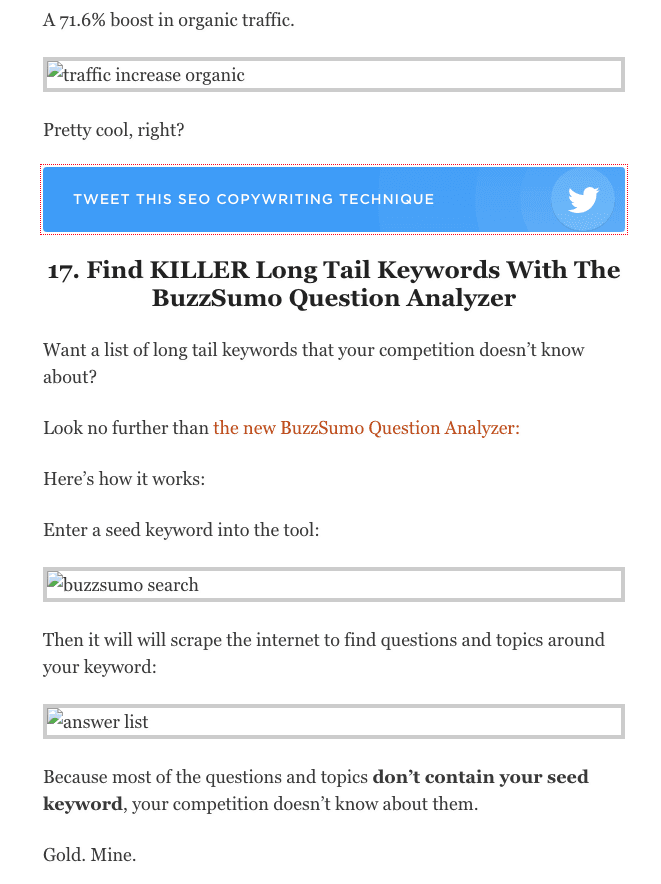
Page Copy Over 1000 Words:
When creating content, we use at least 1000 words as a minimum for page copy.
Why?
It gives signals that this particular page has in-depth data that can answer user questions.
I always say that Content is the King and keep in mind the context too.
Page Speed:
We, humans, lack patience when it comes to our phones
So no one wants to wait more than 4 seconds for a website to load. Whether in India or anywhere people lack patience, they won’t wait for more than 4 seconds.
Google takes care of its a user.
The quicker the website, the better the experience.
The speedy website indicates it’s well developed and keeping SEO in mind, our website will be user-friendly and google friendly too.
Bonus tip :
Call-to-action Buttons :
Using Marketing Psychology, Create Buttons or links with call-to-action not just for UX but should link to content and page elements optimized for Search Engine Optimization (SEO).
Moving to the next point.
Let me sum up this In 4 words, “Think like your user”.
Watch this video: Using Psychology in Marketing
Mobile Friendliness:
According to an article published in Forbes.
Since 2011, more people worldwide own a cell phone than toothbrushes. The number of mobile phone users across the globe is now estimated at over 3.7 million and it’s growing.
The number of Mobile users are expected to reach 5 Billion i.e Rs. 3,46,16,25,00,000.00 by 2019.
Now, are you still not concerned whether your website is mobile-friendly or not?
It’s very clear that how your website looks on a mobile phone is more significant that desktop, especially after Google announced Google’s recent switch to the mobile-first index.
How your website works on a mobile phone is more significant than desktop, especially with Google’s recent switch to a mobile-first index.
While this makes sense for Search Engine Optimization(SEO) it’s also easy to see that a site not optimized for mobile devices would give poor user experience to your visitors.
Adjust the size of the text according to your target audience. Why?
Because your target can be old people or youth.
So based on this you can optimize the text and images of your website for a much better mobile phone user experience.
According to Hubspot, a list of Best Mobile Websites.
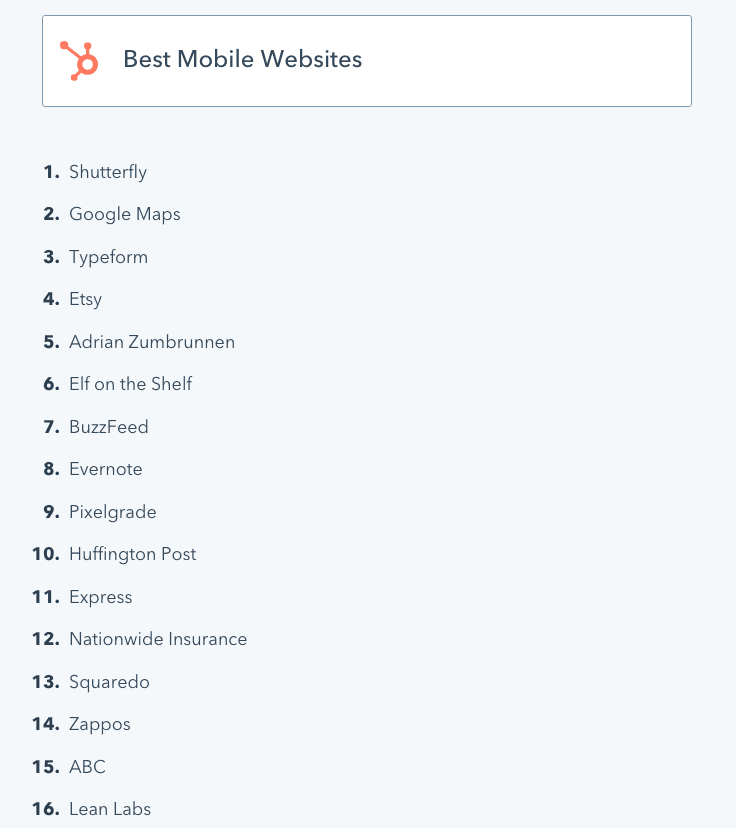
Off-Page SEO :
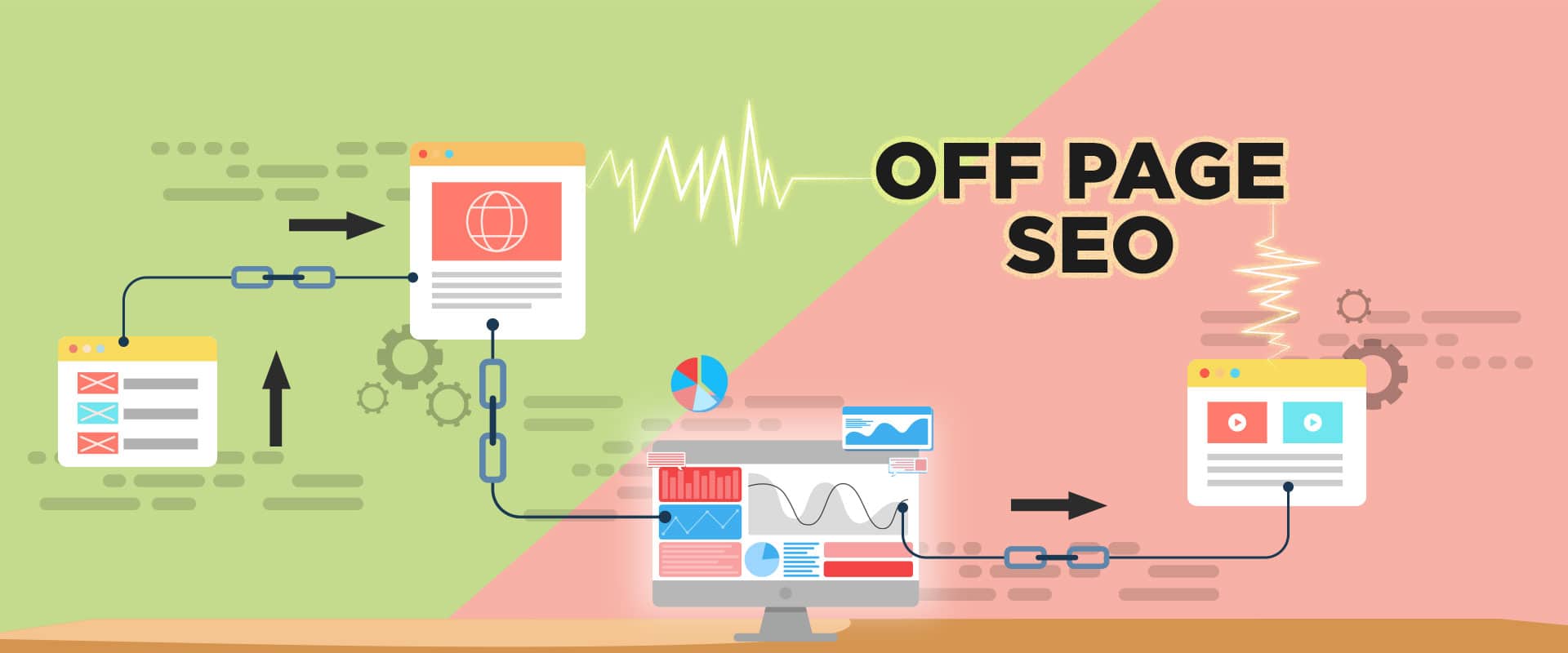
What does it mean by Off-Page SEO? Means
It is clear from itself that some actions are taken outside of our website.
Off-page SEO is not just about links. It’s more than that.
People usually start with On-Page SEO
Off-site ranking factors involve improving search engine and user perception of a website’s trustworthiness, authority, and popularity.
This factor is accomplished when our content is promoted by other reputed places on the internet only if your content is good.
Why does an Off-page SEO matter?
While Google algorithms and ranking factors are constantly improving and getting trickier to understand, the general agreement within the SEO community is that the relevance, trustworthiness, and authority that effective off-page SEO will have a bigger chance to rank high.
Links and off-page SEO:
Building backlinks are an important part of off-page SEO. Search engines use backlinks as a guarantee of qualitative content, so a website with many high-quality backlinks will usually rank better than an otherwise equal site with fewer backlinks.
Off-page SEO is all about creating a reputation in the eyes of Google.
There are 3 types of links:
- Natural links are given to a website without any action on the part of a page owner. For example, a fashion blogger adding a link to a post that points toward their favorite brand is a natural link.
- Manually built links are created through deliberate link-building approaches. This includes things like getting customers to link to your site or asking influencers/bloggers to share your content.
- Self-created links are created by practices such as adding a backlink in an online directory, blog comment section with optimized anchor text.
Some self-acquired link building tactics include black hat SEO but are aware here, your website may get banned.
For example, just like word of mouth is the best marketing strategy any brand can use.
The Same is in Off-page optimization because when some other blog refers to our blog/site, Google considers it authentic and gives it a higher rank.
To rank high, you need to get links from other websites (especially those who are genuine and trustworthy themselves ), mentions of your brand, shares of your content, etc.
Tools for Off-page SEO:
Lapaas Free SEO Audit :
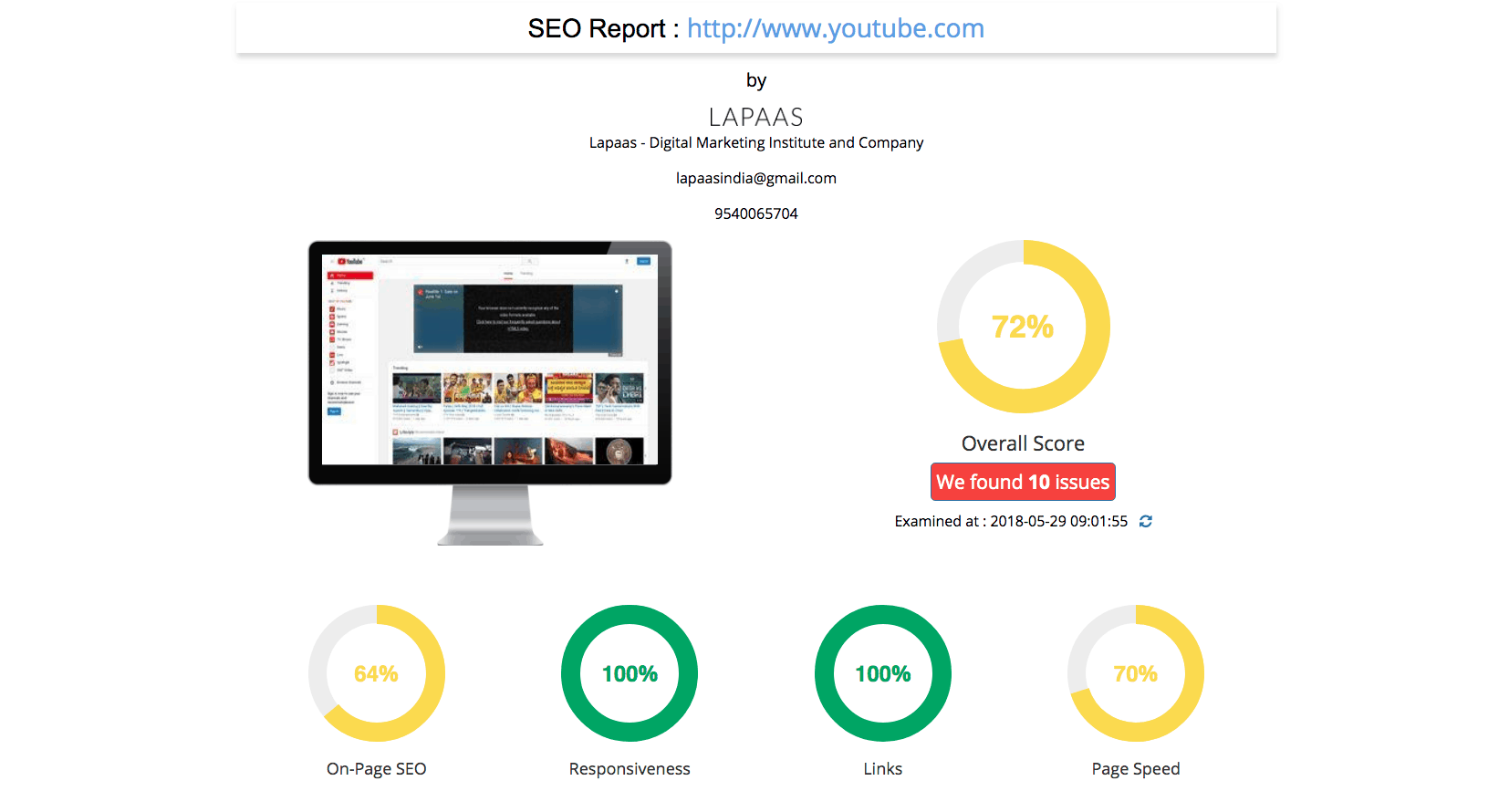
Check your SEO Score here: search-engine-optimization/
- Responsiveness
- Links
- Page speed
Improve these:
- Page Title
- Meta Description
- HTML Headings
- Robot.txt
- Sitemap
- Favicon
- Mobile-Friendly Check
- Image alt text
Ahref :
This is one of my favorite tools for identifying link opportunities.
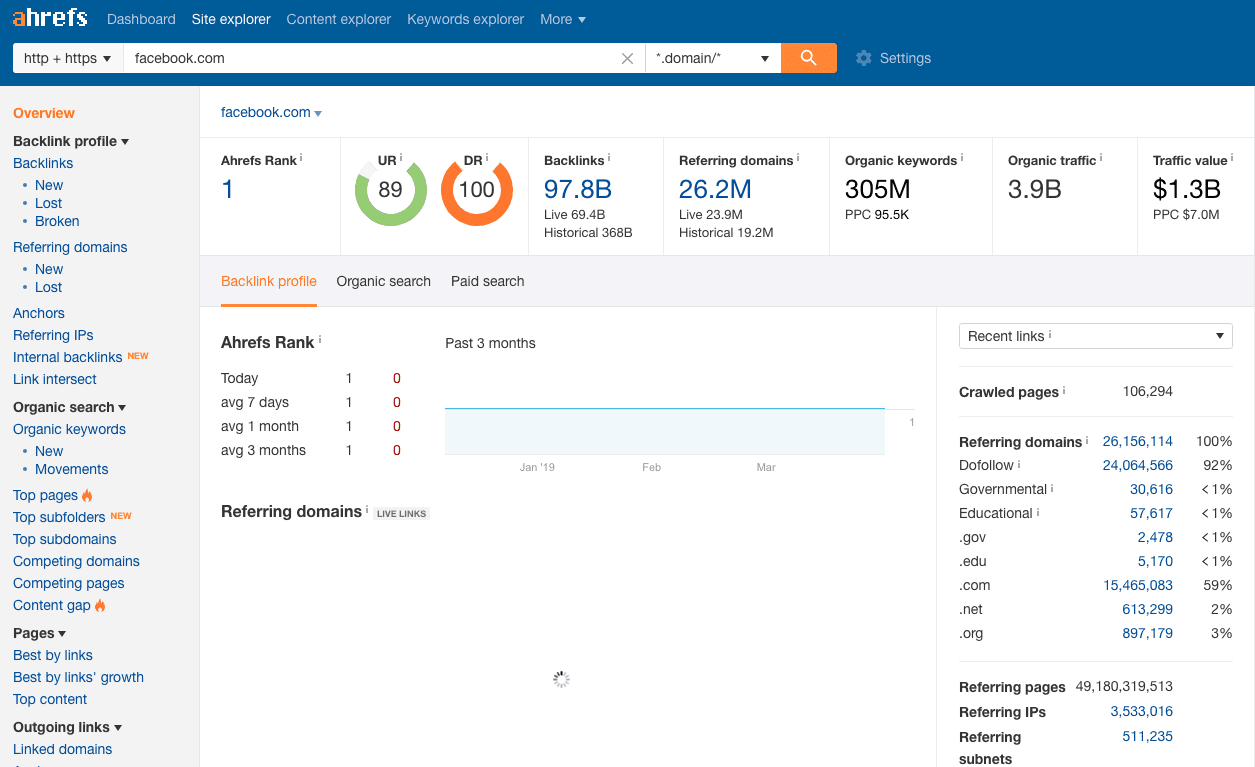

Enter a domain and you’ll find a list of backlinks of a given domain.
- Check the rank of your competitor strategy.
- You can analyze your competitor’s URL.
- UR(URL rating) & DR( Domain rating)
- Analyze the top pages of your competitor’s
- Use Content Gap
It’ll show you what keywords you are not ranking for.
There was a time when Google used to show PageRank(PR). But Google has stopped showing this parameter, now the SEO world relies on Moz’s DA and PA Metrics, Ahref’s DR, UR.
What are they?
Let’s start with DR and UR.
Domain Rating(DR) is the link popularity, used to estimate a website’s ability to get organic search results/traffic from a search engine.
If your domain is linked with sites with high “link popularity” they are more valuable than those websites with low popularity.
If I sum up this in one line, their trust score is transferred to your domain.
URL Rating (UR) is a number given to a specific webpage from 0 to 100 based on the strength of a target’s page backlink profile. Both internal and external links are considered in calculating the URL Rating.
UR considers:
- Links between pages
- Nofollow attribute-
What are they?
People who comment on their blog links on my youtube videos thinking that their UR will increase, it won’t because they are no-follow links.
Search Website name: www.facebook.com
- Analyse DA, UR of the website, have a look over their keywords.
- Backlinks: Good news!!

- You can create backlinks from the competitor’s website.
- SEM rush :
SEM rush is my second favourite tool for identifying link opportunities.

In SEM rush you get 10 FREE trials of the website.
It’s the same as Ahrefs. You can:
- Create Backlinks
- Check competitor’s backlinks
- Check their DA/PA – (Explanation is given below )
- Keywords you are not using and keywords that your competitor is using.
Domain Authority(DA) is just like Domain Rating just that Moz’s parameters are DA and PA and Ahref’s parameters are UR and DR.
PR is Page Authority is a parameter that predicts how well a specific page of a website will rank on search engine result page(SERP)
E-commerce SEO:
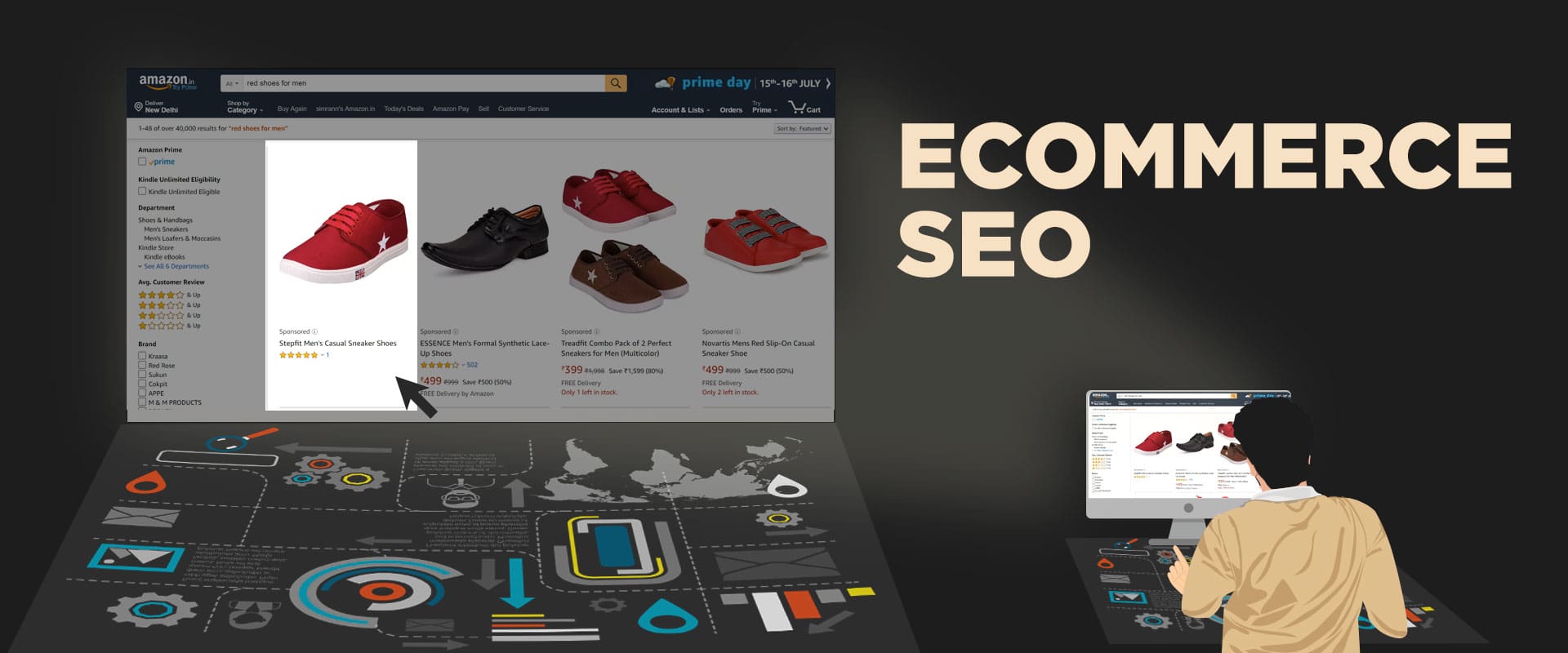
Now that we know everything about SEO from keyword research to tools we can use.
This Topic is very essential for people who have their e-commerce store or those who make e-commerce websites.
Why do we need SEO on e-commerce websites?
Do you know that a big majority of people first search on google before buying something from an e-commerce store?
Parts in E-commerce SEO:
- Google Search Result
- Find keywords related to your genre
- Keyword research
- How to find keywords in your genre- Amazon search, google, semrush, ubbersuggest, Wikipedia
- Infrastructure
- Amazon checkout steps
- Use psychology in On-page SEO
- Free, cheap, get off 99 rule, comprehensive description of the product.
How to find keywords for E-commerce Product:
Keyword research:
Amazon search results:
Go to Amazon and search a keyword related to your genre and you’ll see a lot of suggestions.


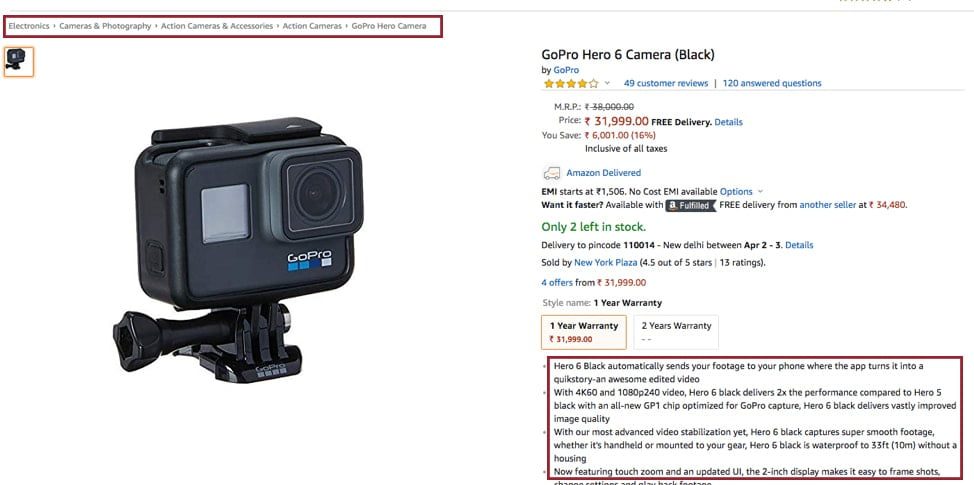
Google Amazon and search for anything related to your product.
Quora:
One of the most popular sites, which allows you to ask questions regarding any existing topic in this world and it can be used as a keyword research tool as well for blogging topics.
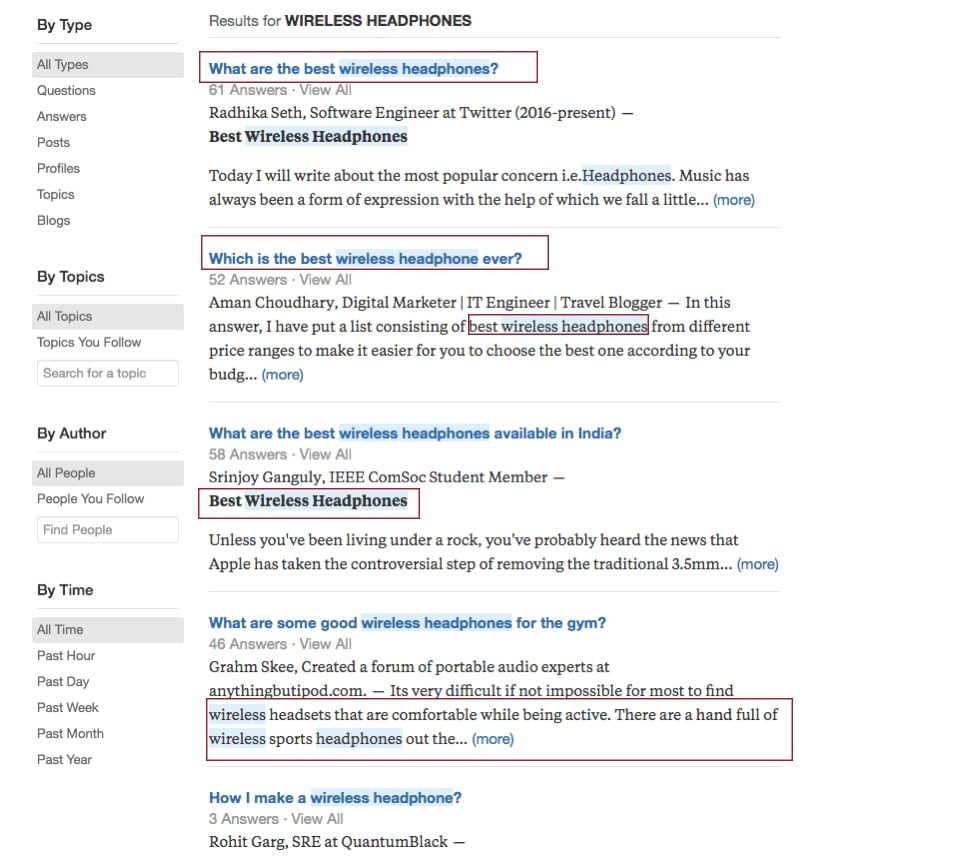
Solve:
I was amazed by this website, an awesome tool that allows you to tap into keyword suggestion results from Amazon, Wikipedia, Ask.com, Google and Youtube.
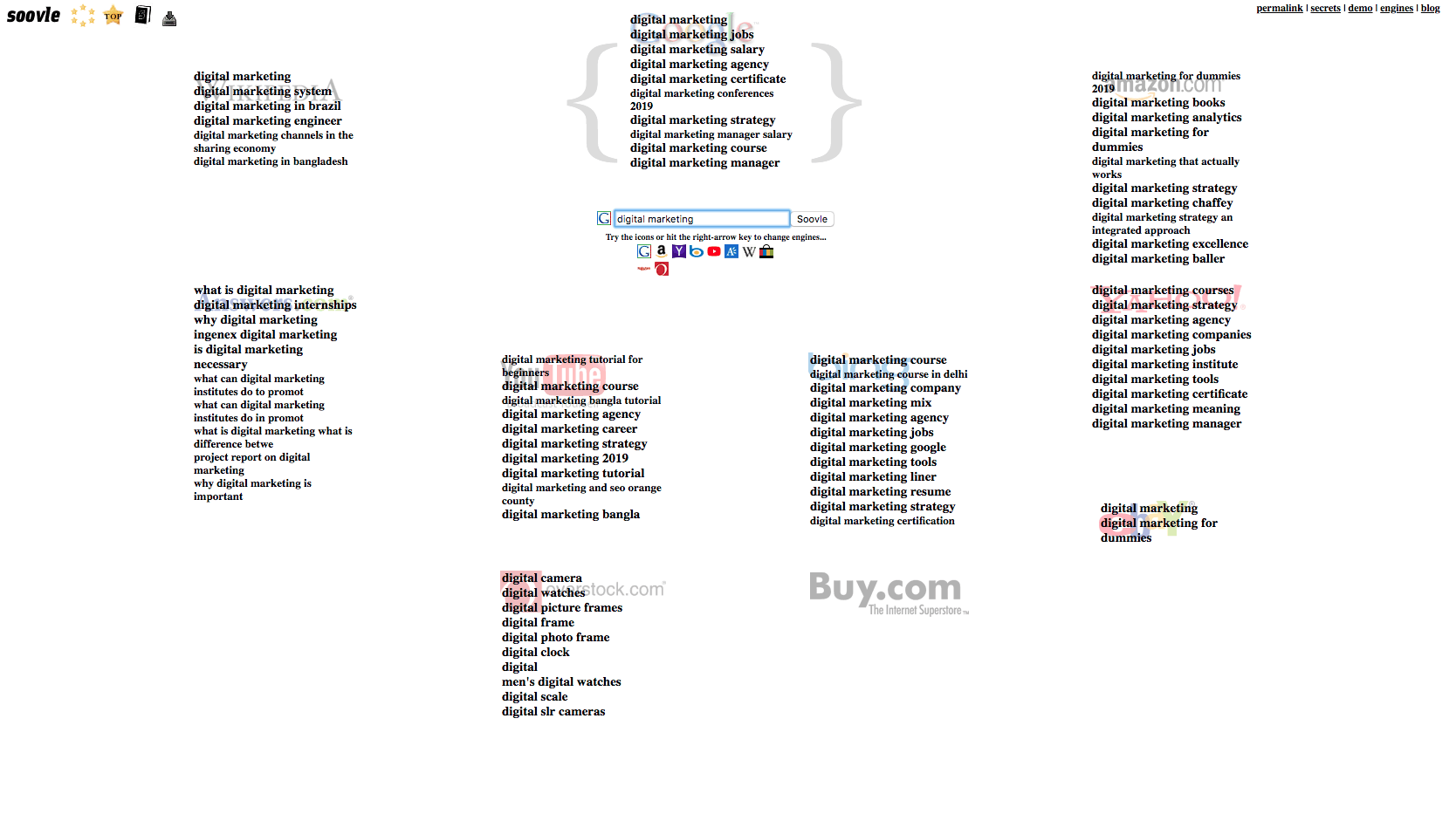
Amazing right?
GOOGLE- RELATED SEARCH RESULTS:
The best keyword research tool is Google!! Period.
Search on google your genre keywords and in the bottom, you’ll see a list of keywords. Let’s say you search Wireless headphones:
These are your Keywords like you should target:
- Wireless headphones jbl
- Wireless headphones sony
- Wireless headphones Flipkart
- Wireless headphones price
- Wireless headphones for mobile
- Wireless headphones under 500
- Wireless headphones with mic
- Wireless headphones Samsung
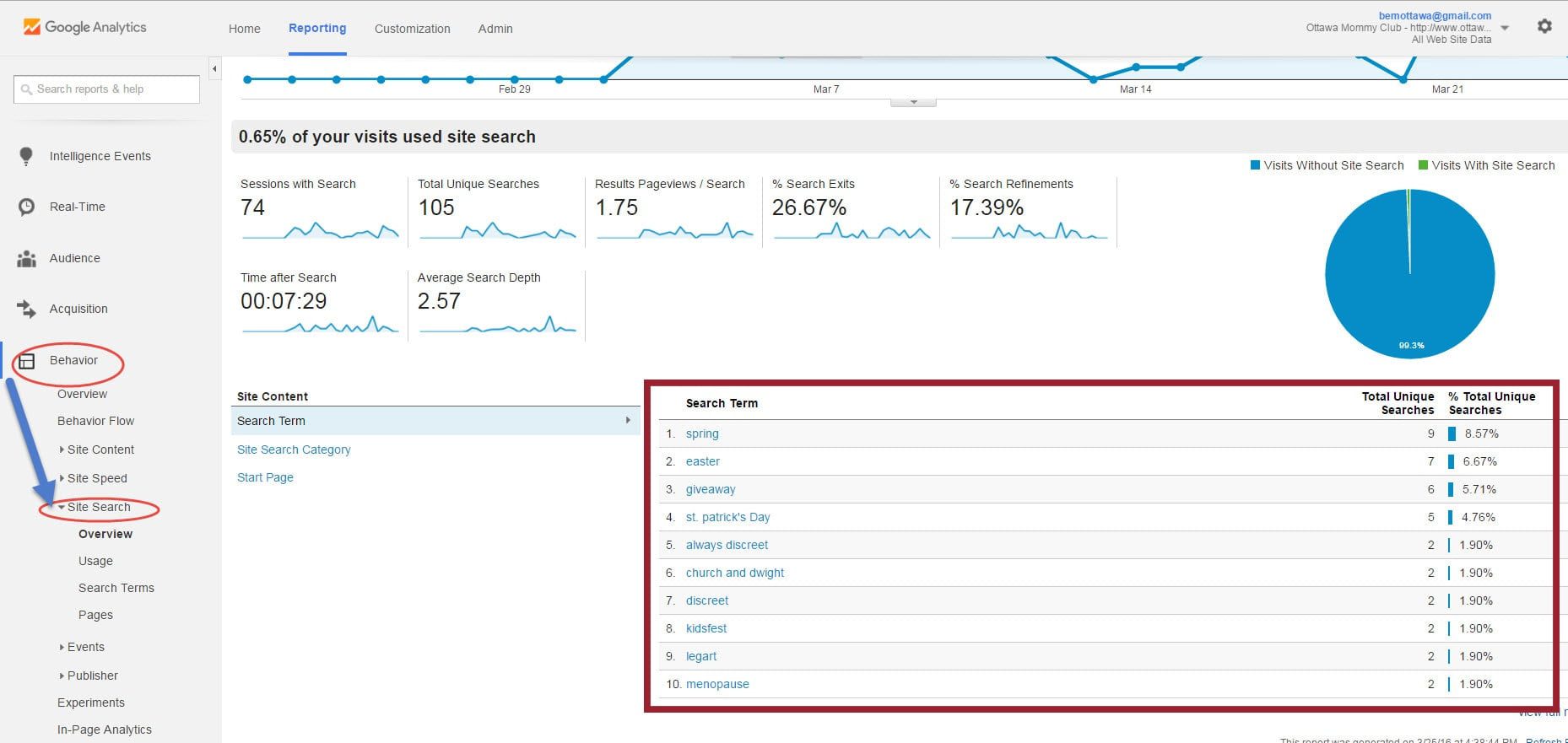

Google Analytics:
This is the most accurate way after google search results to find keywords visitors are using on your website when searching for products to buy. Go to Google Analytics->Behavior -> Site Search

Wikipedia:
Search wireless headphones Wikipedia on google and you’ll find a lot of keywords related to wireless headphones.

Checkout Infrastructure:
Step1:
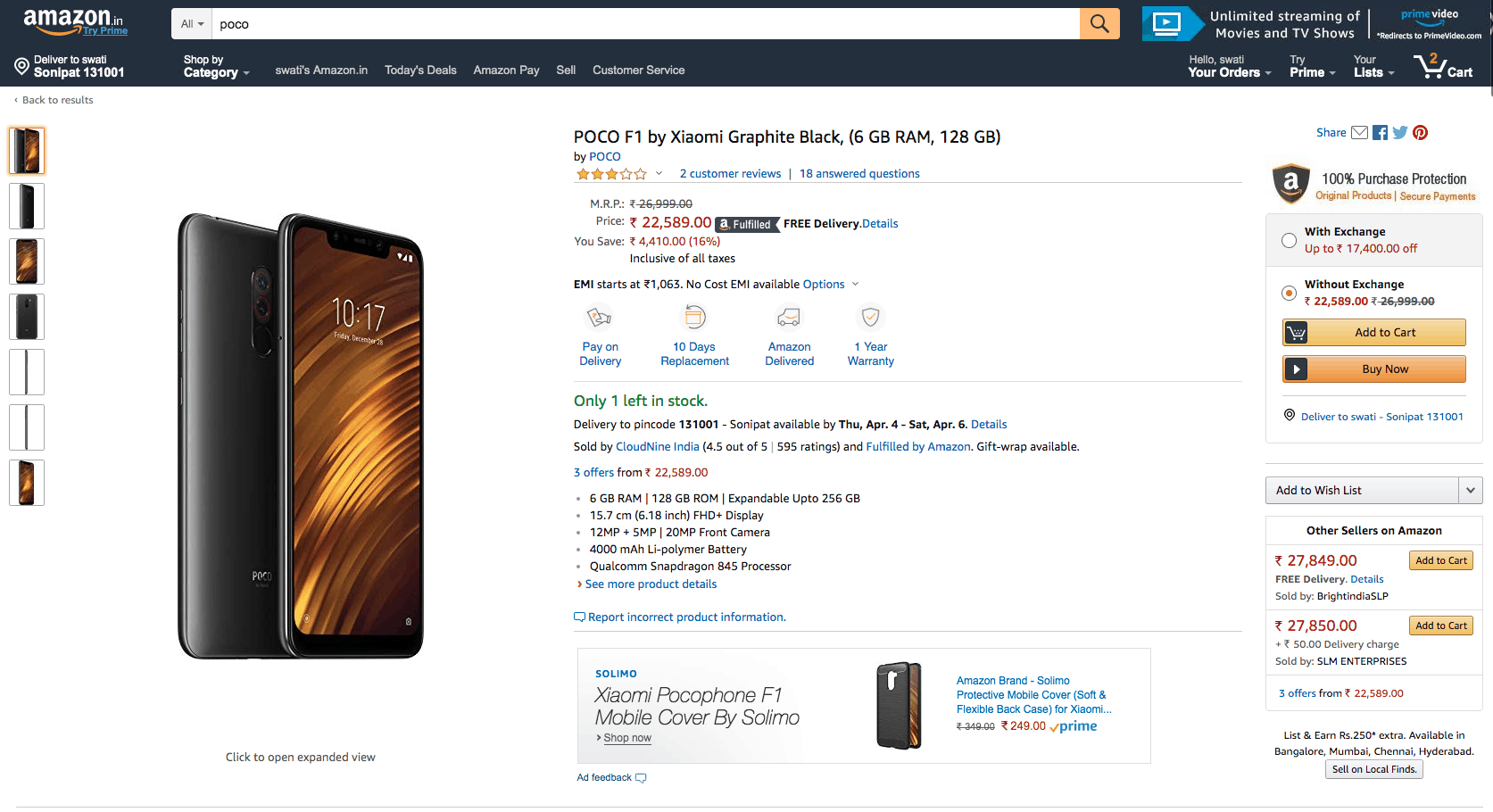
Step 2:

Step 3:

Your Checkout system should not be more than three steps.
Use psychology in On-page SEO:
When it comes to selling, Psychology is very important. People buy on emotions but justify with logic.
- Use terms like Free, cheap, Get 10% OFF, etc.
- Make sure you provide a Comprehensive description of the product.
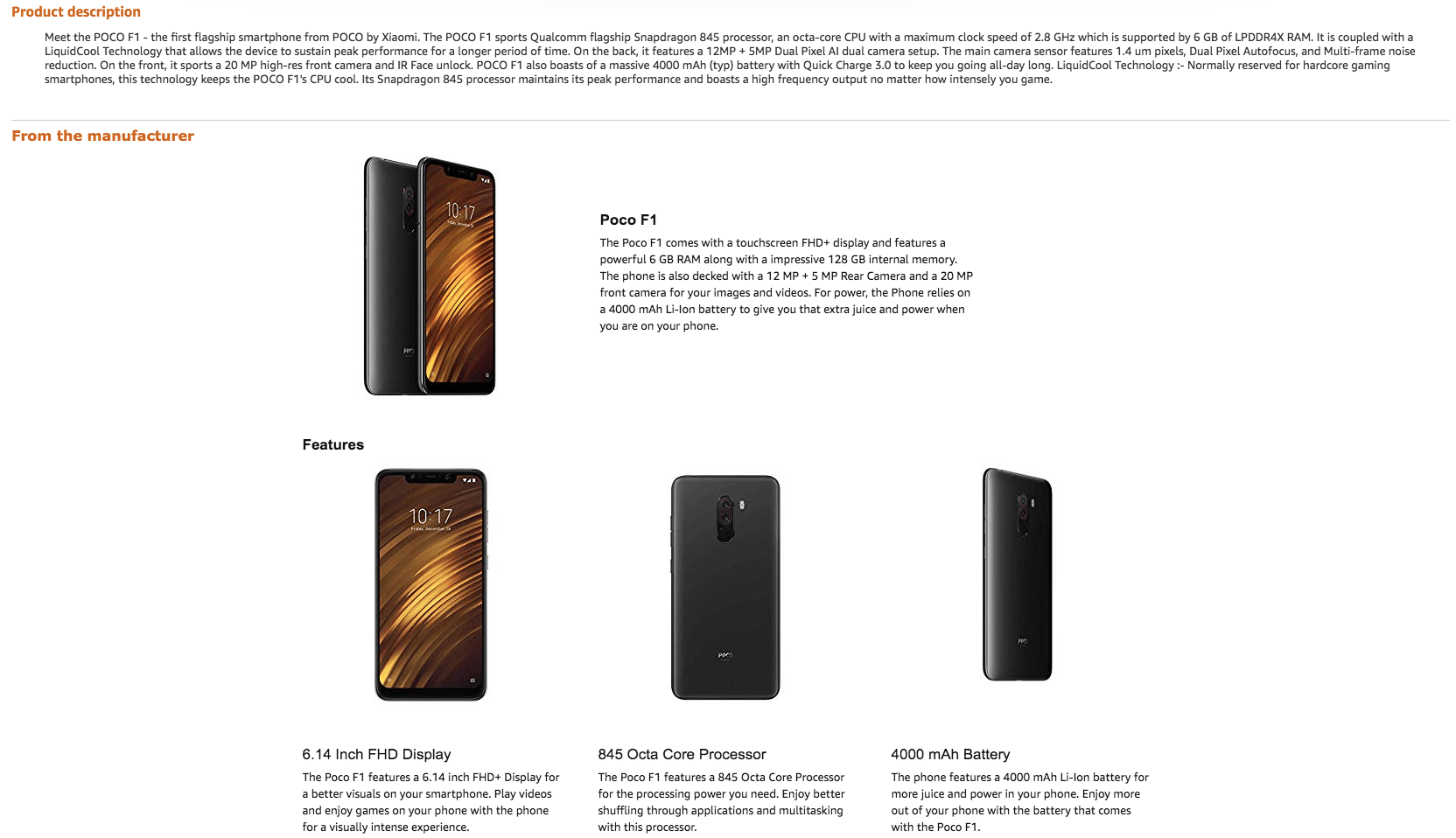
Ask for Customer Reviews:
“A satisfied customer is the best business strategy of all” – Michael LeBoeuf, American business author.
Based on research, it was observed that 90% of consumer considers reviews before buying a certain product. Customer reviews are considered to be the number 1 factor when it comes to e-commerce, the new alternative of Word of mouth. Suppose your friends and family haven’t tried a certain product, by those reviews we have the opportunity to know what other people think about a particular product.
“All your SEO efforts on one side and customer reviews on the other side.”

GOOGLE OPERATORS AND HOW TO USE THEM :
OPERATOR #1: “-“ – Minus Operator.
Using this operator, you can exclude a website from search results. Minus sign is used when we don’t want to see the results of a particular keyword. The example is given below.
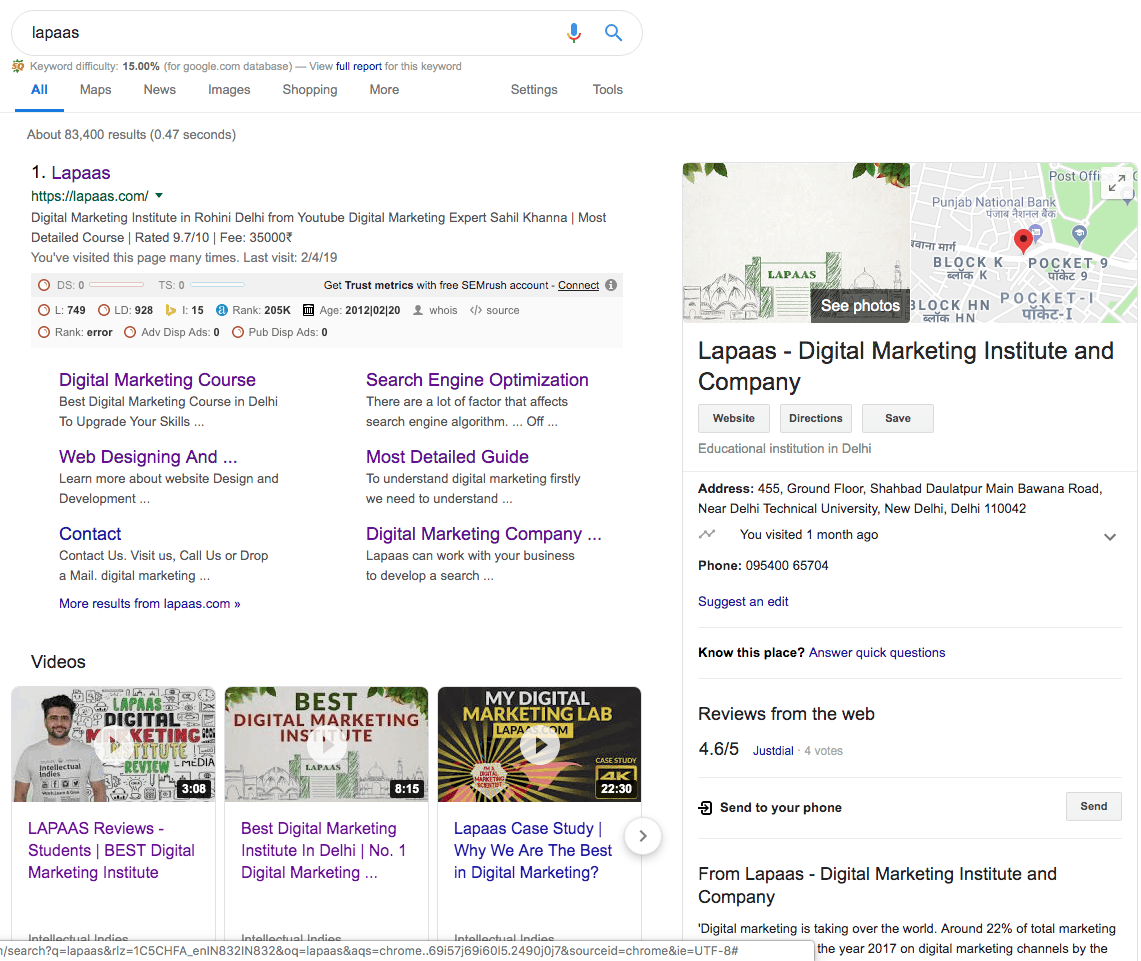
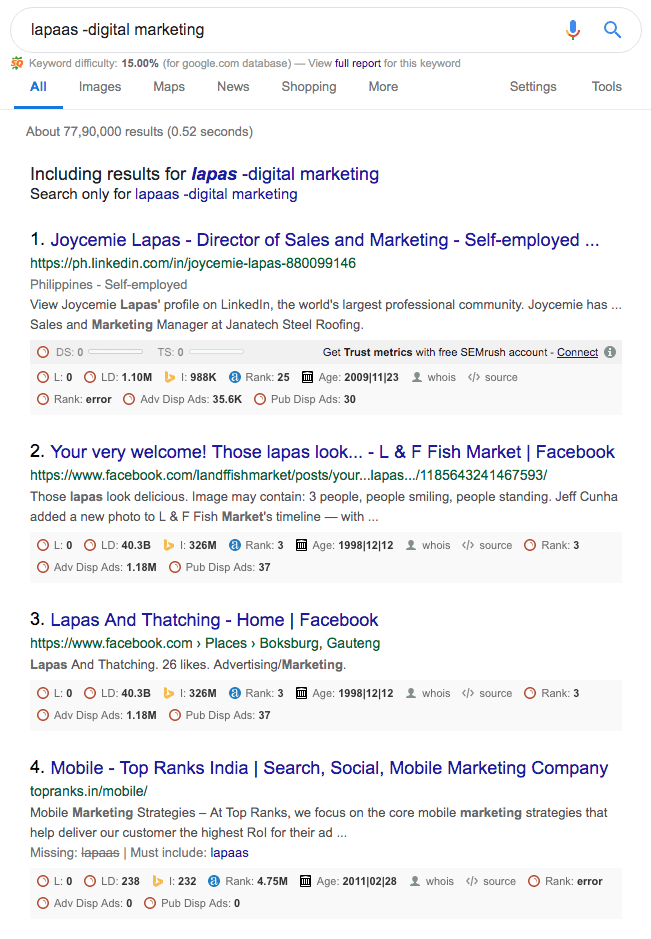
In this case, Content with the name of lapaas and digital marketing won’t show up in the search term results.

“Sahil Khanna” OR “digital marketing” OR “Youtuber”
Site: Operator:
Search site:sitename.com and you’ll see all the URLs Google has indexed.
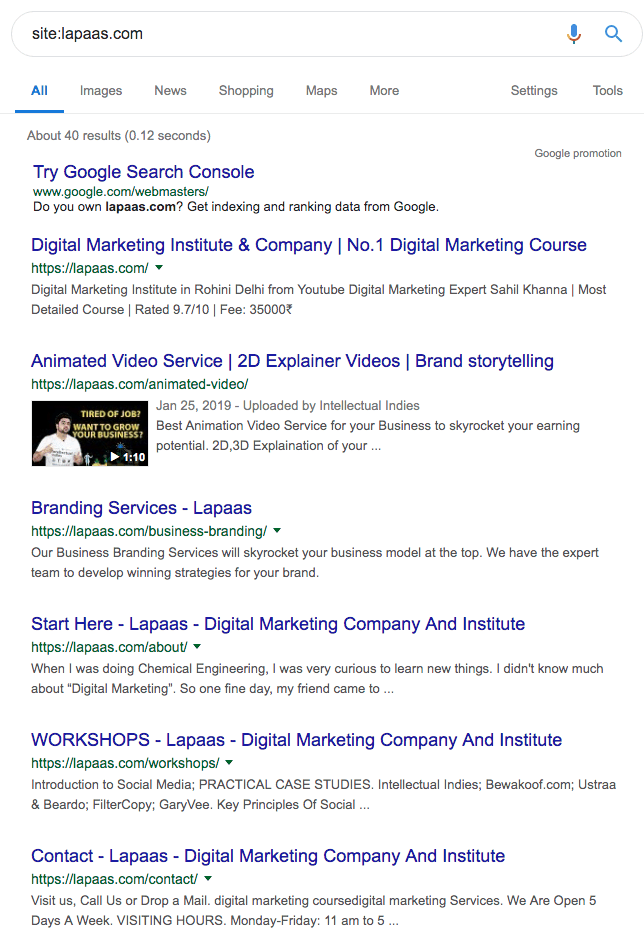
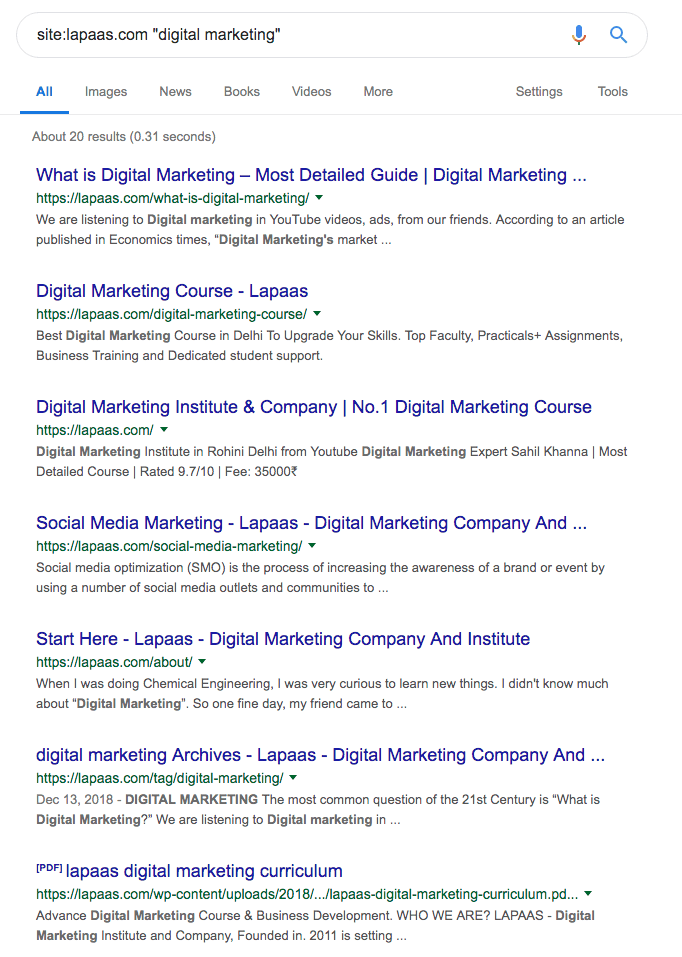
We can see any post of a specific year.
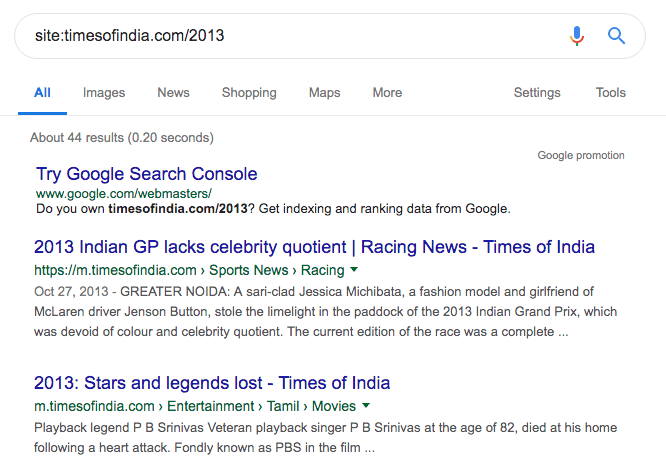
But if you search site:Lapaas.com/2013, you won’t see any result.
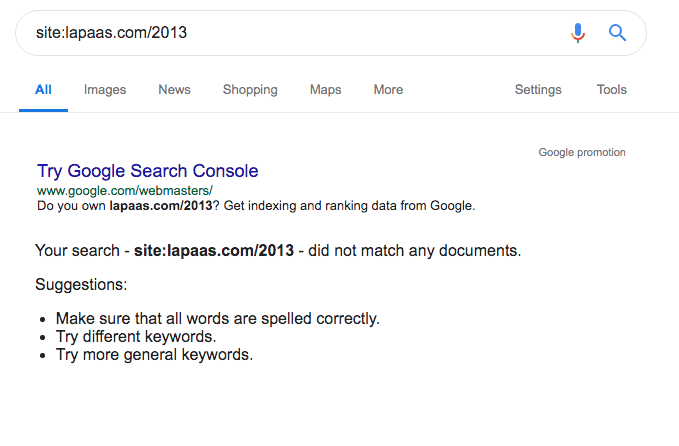
If we want to find all the existing Facebook pages of digital marketing.
Search- site:https://www.facebook.com/ “digital marketing”
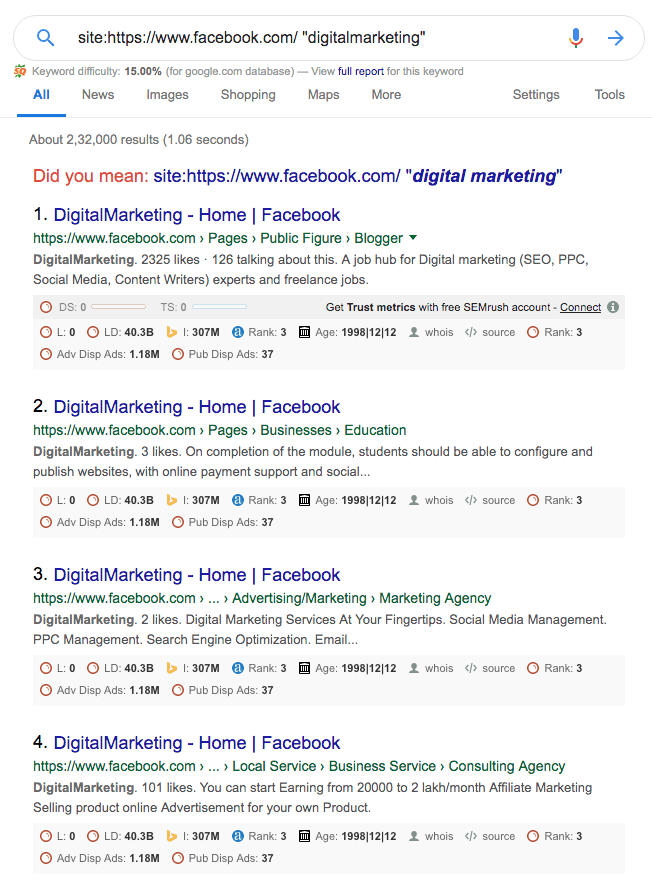
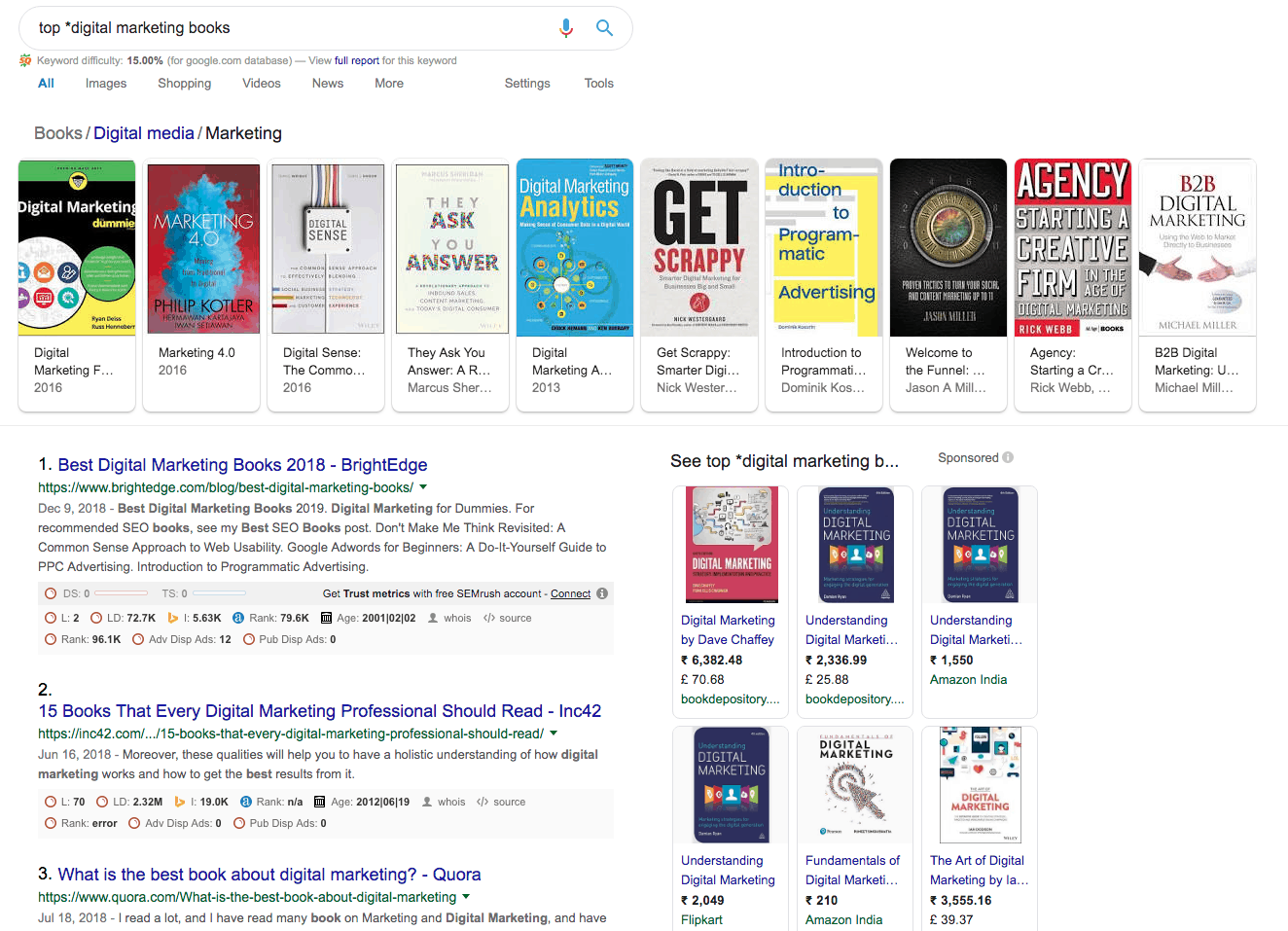
This search phrase is helpful when it comes to finding top books, courses, etc. Just type top *marketing books.
You can search for the best *free digital marketing courses as well.
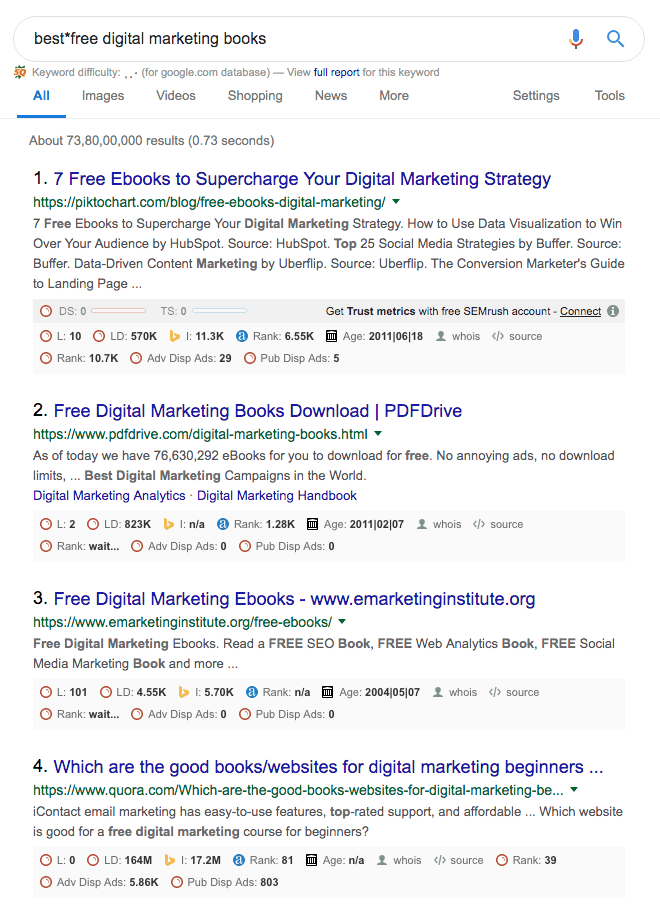
This one is for college students who find it hard to pdf of books, Just type site:websitename.com filetype: pdf
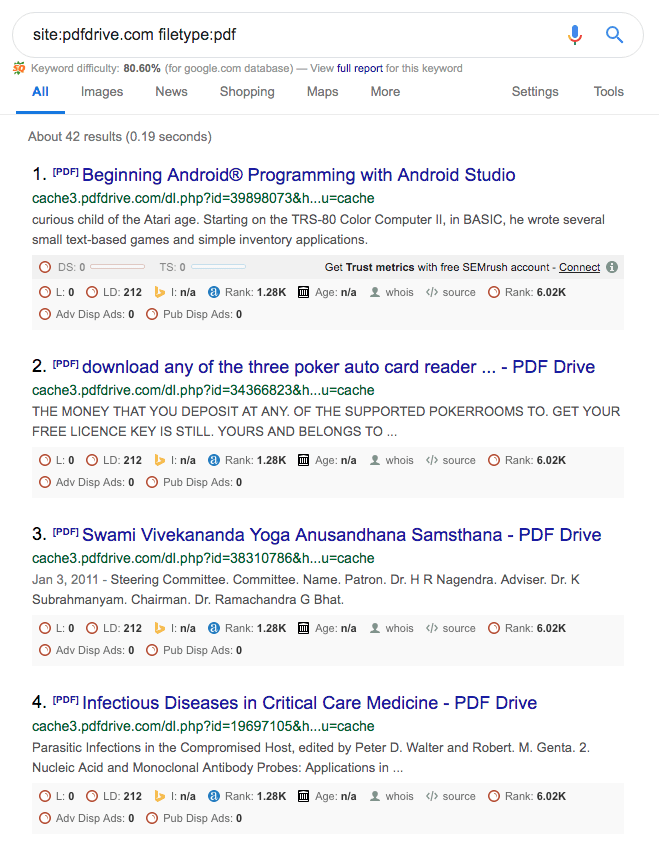
When it comes to keyword research, we are continuously looking at other websites, either to see what the competition is up to or how can we get links to improve our Search Engine Optimization (SEO). In this, we just need to add a cache at the beginning of the website name, that’s it.
In case a website goes down for a certain period, we can view it via cache memory.
Add Cache:www.websitename.com
Add Cache:www.lapaas.com
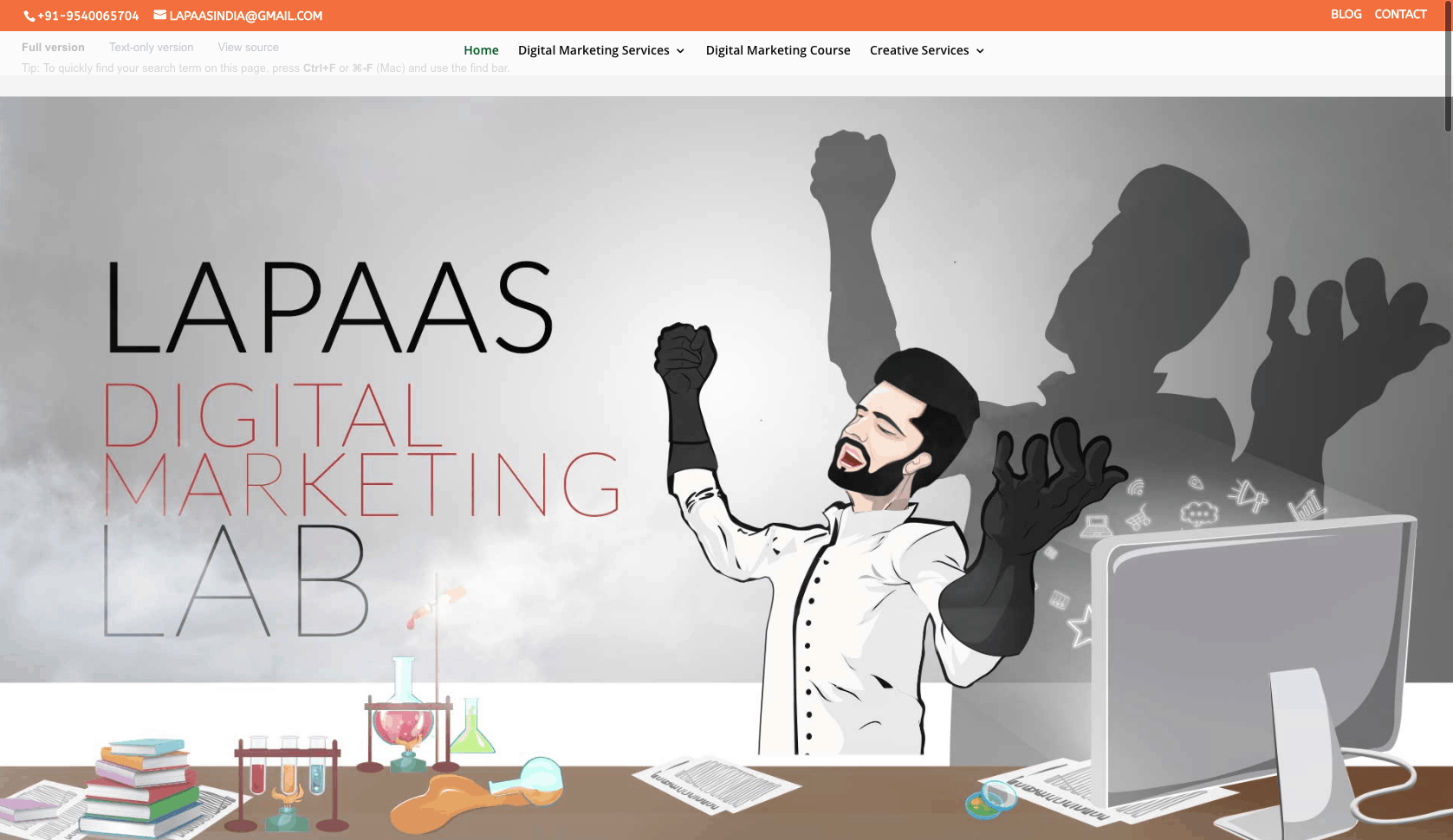
Now we’ll learn how to find a guest post because it’s still the best way to create backlinks.
Type: in URL: “submit a guest post”
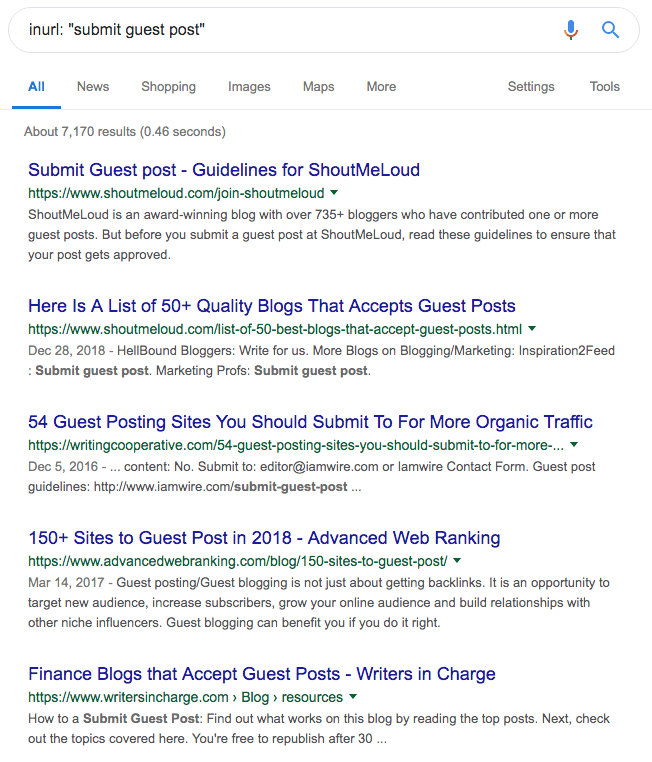
But what if we want to submit a guest post in our genre?
Type: inurl: “submit guest post” or site: “submit guest post” “digital marketing”
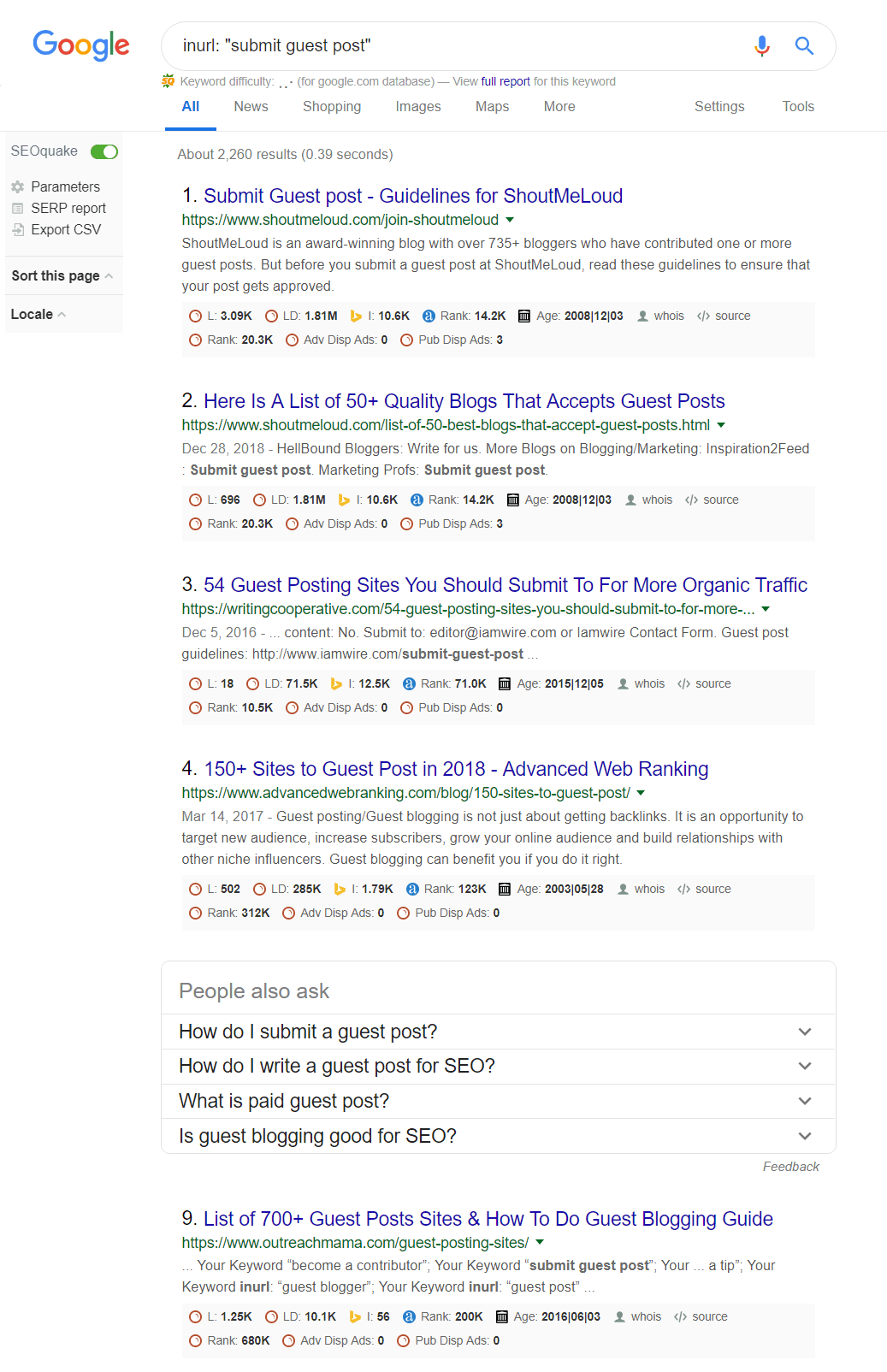
Video SEO
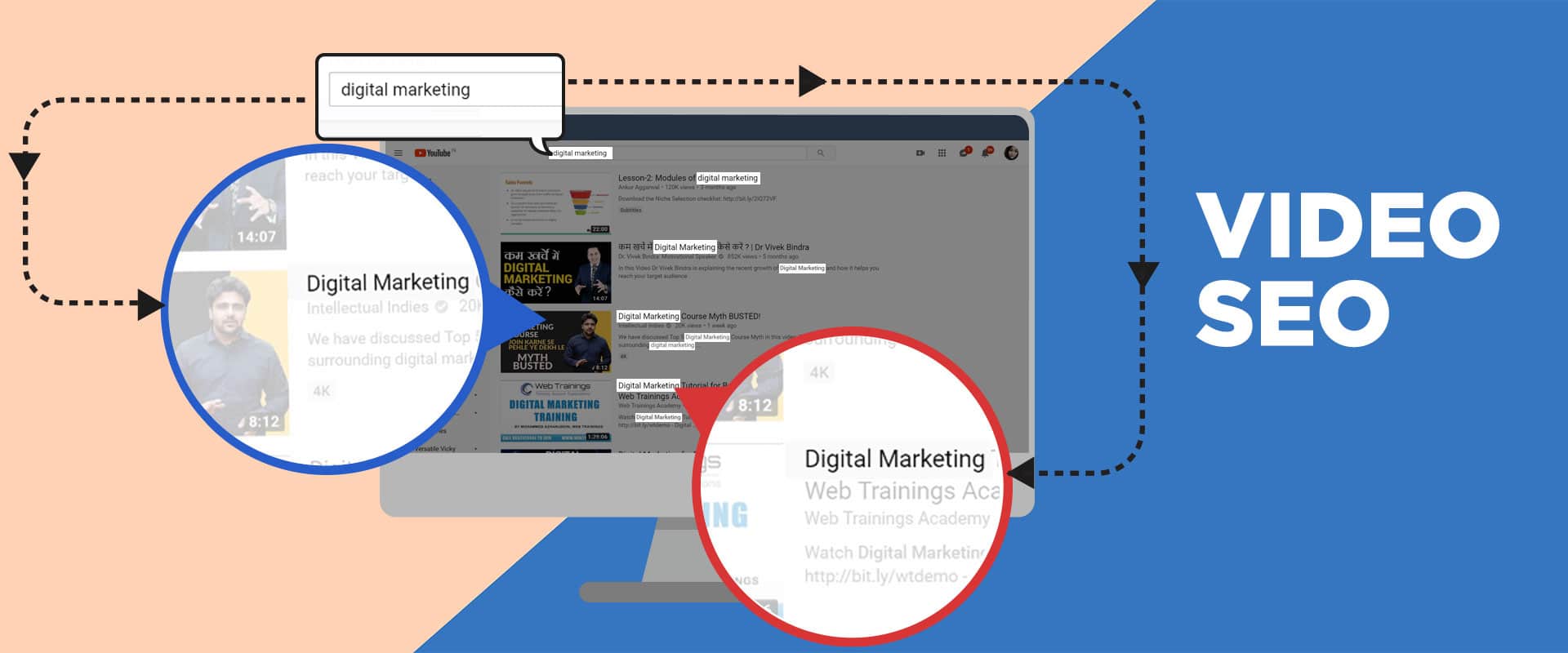
VIDEO MARKETING :
According to an article published in Forbes, Video is projected to claim more than 80% of all web traffic by 2019.
Yes, That’s me ☺
“ I received the biggest results from Youtube SEO than On-page SEO or Off-Page SEO.” – Sahil Khanna
It all started after getting a huge success On Our YouTube Channel Intellectual Indies- I started an Offline Digitial Marketing Course For better Practical knowledge and Implementation Exposure.
Adding a video to a marketing email campaign can boost CTR(click-through rates) by 200-300%.
Isn’t it crazy?
Are you still thinking of doing just blogging?
Blogger doesn’t be sad.
I suggest starting Vlogging too.
According to a statement by YouTube, video consumption grows by 100% every year. EVERY YEAR.

This ranking changes regularly.
In the last decade, the digital world has changed a lot.
Desktop and laptop, computers Arena is fading nowadays to search the web and interact with content. People are picking up their mobile phones.
Jio Dhan Dhana dan
Digital technology and Internet packs are cheaper today than it’s ever been before; there are virtually no boundaries on how, when and where people can interact and to what extent.
You can optimize your videos for Youtube and Google search.
Now When people search for Lapaas- Digital Marketing Institute and company.
They see my Youtube Videos.
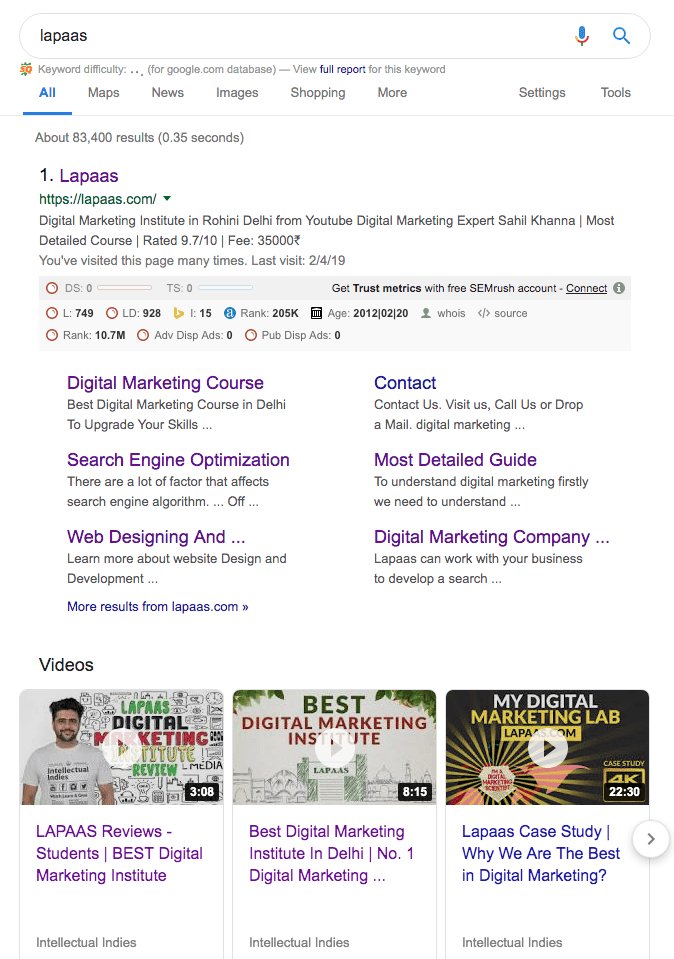
Like with a blog post, there’s much more to do in video Search Engine Optimization (SEO) than uploading interactive content and hoping for the best.
You also need to optimize your video around Different keywords that people use on Youtube or Google.
According to an article published in Forbes, 65% of business decision-makers visit a marketer’s website after viewing a branded video. It’s crystal clear that Youtube videos can dramatically improve your site’s SEO by driving people to your homepage.
Do you know the Calls I receive for Digital marketing Courses are mostly from Youtube Video Marketing?
90% of the traffic on my website is from Youtube. Means People get to know about my Institute through Youtube.
By adding video to your landing pages, it played a huge role in improving the SEO of my website.
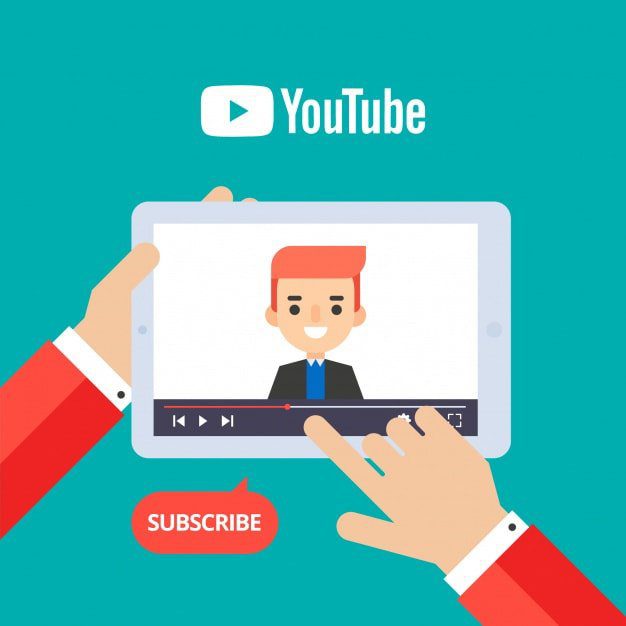
Best Example of a company that has done well in this.
Headspace, a meditation app that has become a $250 million company.
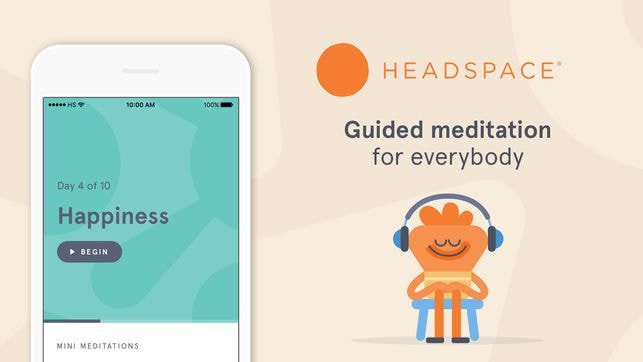
Source: Itunes- Apple
Headspace basically provides multiple levels of meditation. Most sessions are in video format, beautifully created. They heavily rely on a video medium.
Where do you think video marketing is going?
Black hat SEO
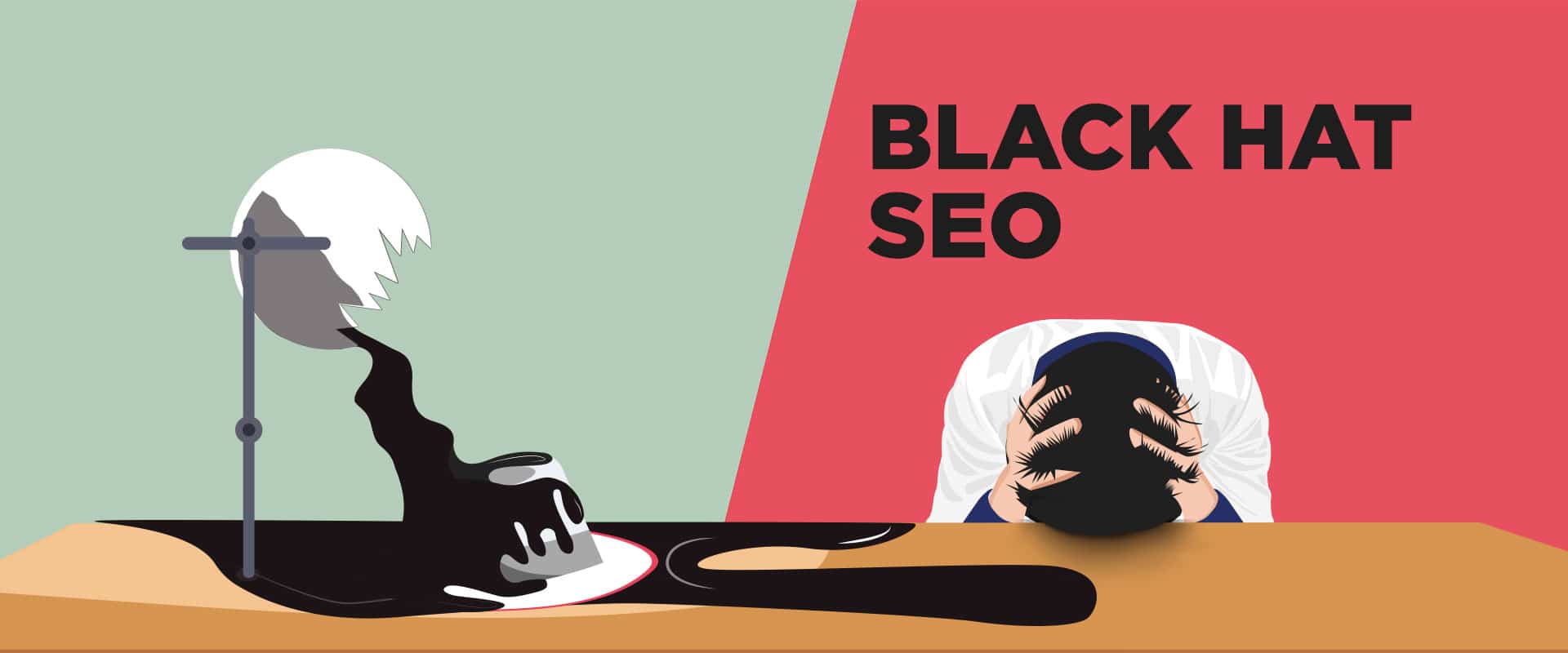
Let’s talk about Black hat Seo.
Black Hat SEO Techniques:
It seems clear from the name itself that it’s something illegal.
We can call it JUGGAD and we Indians cannot resist but find a way out. Black Hat SEO is the same thing, we’ll do some JUGAAD to rank high or increase our reach.
Black hat SEO is a technique widely used against Search engine protocols to rank high in search results.
This technique is kind of illegal though and people end up being penalized from search engines.
Here some of the traps that you should never fall into.

LIST OF BLACK HAT SEO TECHNIQUES:
Keyword stuffing
By the way, the idea is not bad, How about if we write our focus keywords again and again?
No don’t :p You’ll be penalized by Google Panda(The algorithm of Google)
Over-Optimized Alt Description:
Keyword stuffing in the alt description section.
Anchor text on internal images:
You need to keep the content of your site properly arranged that makes sense. Don’t lose Common sense just to rank.
Suppose you are writing an article on your blog about a visit to a newly opened restaurant and want to recommend other people about it on your site.
I’ll recommend use anchor text like this:
Recommended:
If you’d like Chinese food, we have a new range of Chinese dishes; do check them all out at DosaUnlimited. In Rohini.
Not recommended:
If you’d like Chinese food, we have a new range of Chinese dishes; do check them all out at Dosaunlimited in Rohini.
Makes sense?
Hidden Text and links:
Changing the colour of the font or making it invisible for the sole purpose of building links.
Google has discovered all the tactics like using the same colour font as the background, setting the font size to 0.
And some beginners still thinks that these techniques still work :p
So don’t put illegal text at the bottom of the page, keeping the text colour the same as the background.
Comments on Blog:
You may have seen many comments on blogs like in the picture given below and I highly recommend avoiding this.
It’s spam and it doesn’t even work nowadays because of the Google updated algorithms.
STRUCTURED DATA SNIPPET:
This is my favourite black hat technique and I have tried this with my various clients and saw a 10% increase in CTR. So I highly recommend this. Do you use those stars?
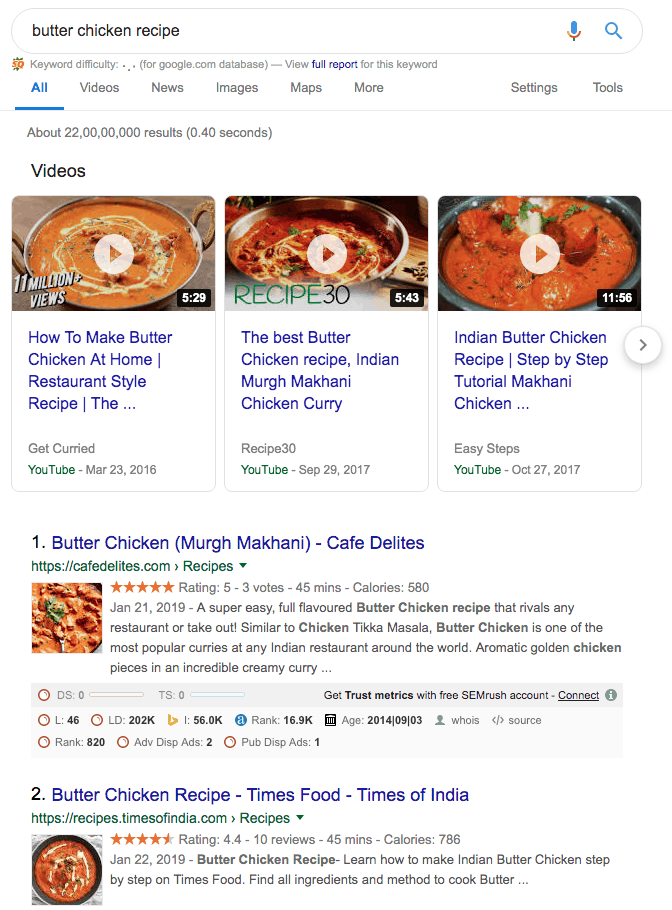
Link Farms:
It’s a farm of different websites developed especially for link building. Each link leads to a website that they want to rank.
Search engines like Google, Bing can easily catch this activity and I recommend avoiding this. Instead, write content in such depth for another website as a guest post and acquire backlinks in the body of the blog.
Private Blog Networks:
A private blog network is a collection of websites used especially in link building. We can call it a kind of link farms because they aim to create backlinks
Every PBN site is linked with the site we want to boost in the search engine.
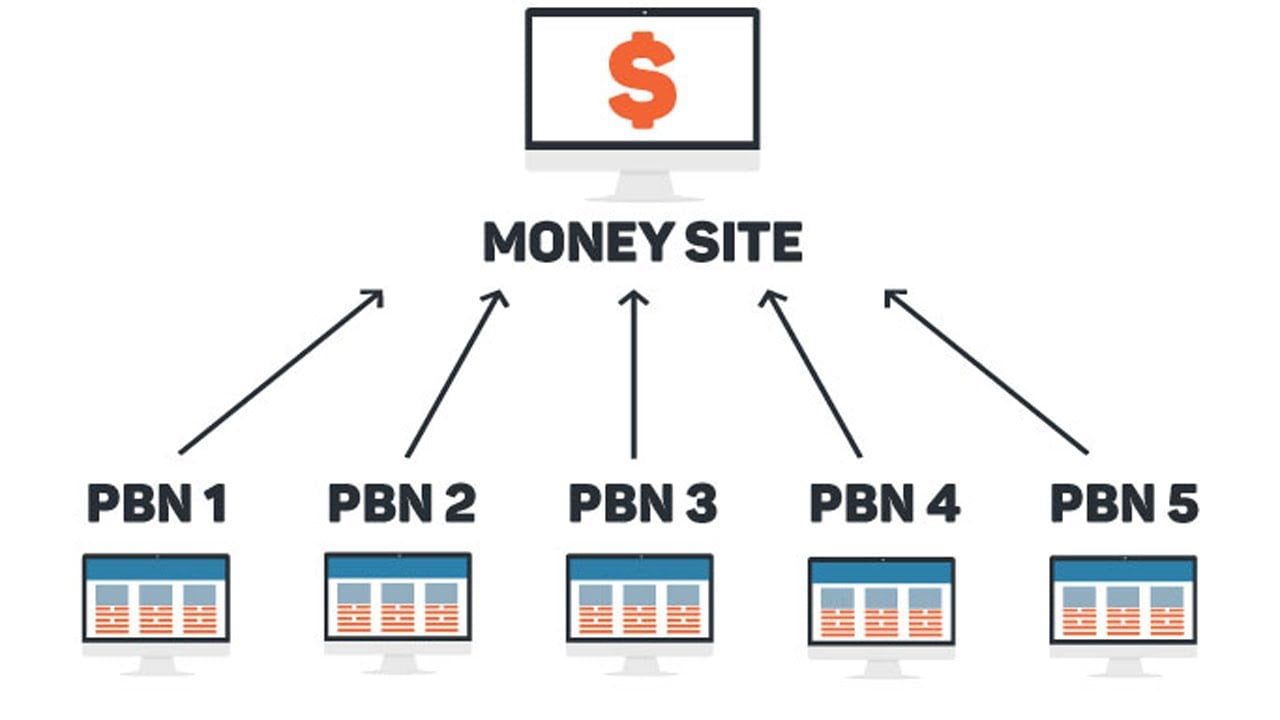
Content Automation:
Yes! This kind of tool exists in the market that can write the content using the keywords you provided.
It’s a part of the Black hat technique.
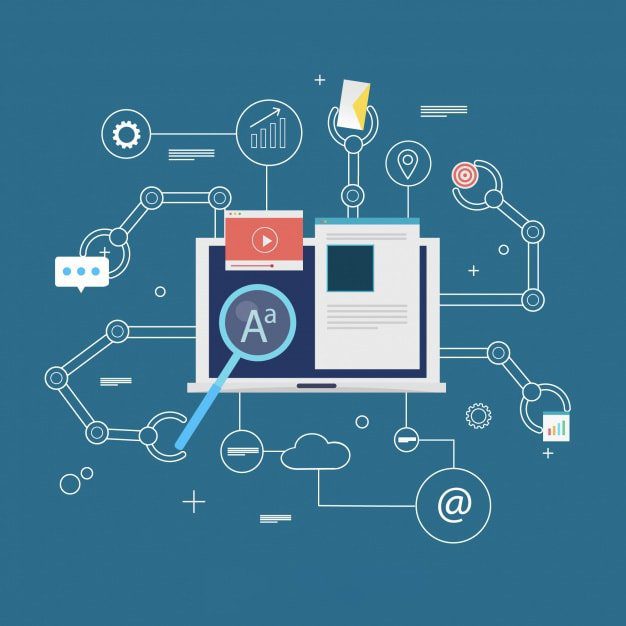
BONUS UPDATED TRICKS OF SEO 2019 :
Okay after reading everything about What is SEO and now we need to learn updated tricks of SEO?
Means Google will keep on changing its algorithms?
Don’t cry. Let’s face this together.
To be honest there is no denying in the fact that we can not trust Google when it comes to algorithm updates. People are now confused because Google has killed old techniques of SEO. Though some remains are unaffected.
SEO Tips & Tricks
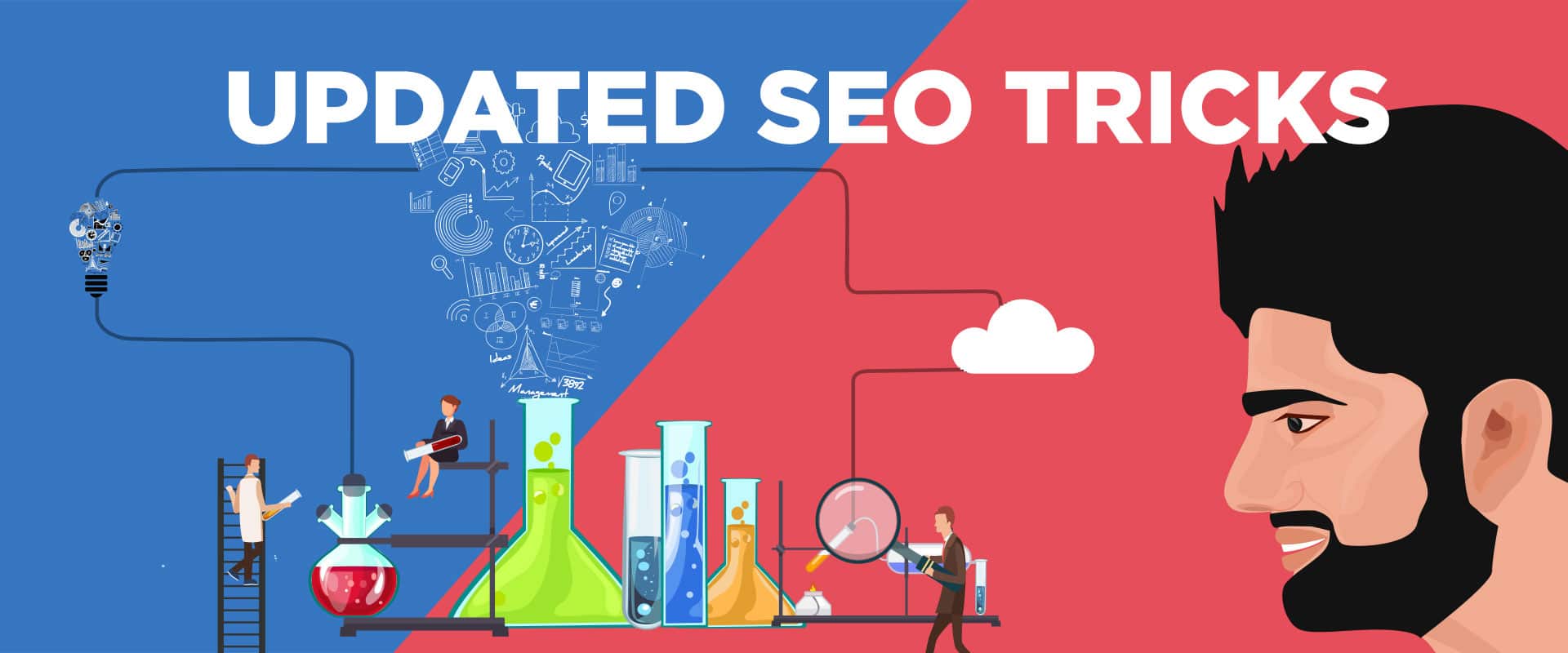
Let’s start with tricks of SEO 2019:
Content is the king:
As I always say in my videos that write in such depth that visitors can not stop themselves from reading it. -Sahil Khanna
“ Create content for your visitors than for crawler”
Consistency in Branding :
No matter how great your content is, brand awareness is vital for your online presence.
You need to be consistent in branding.
My Youtube channel: intellectual Indies
It’s my way of branding myself.
Once your branding strategy is good then Google will notice your brand image and will give results for the queries related to your niche. So branding is going to be the vital factor for SEO in 2019.
Always remember People always invest in your brand image first not your content.
BEST UI/UX Signal :
We have already studied the importance of UI/UX signals.
If you are ignoring this strategy then it’s a huge mistake in SEO 2019. It takes only 15 seconds for a visitor to judge your website.
Google is like a daily soap serial, you never know what’s gonna happen next.
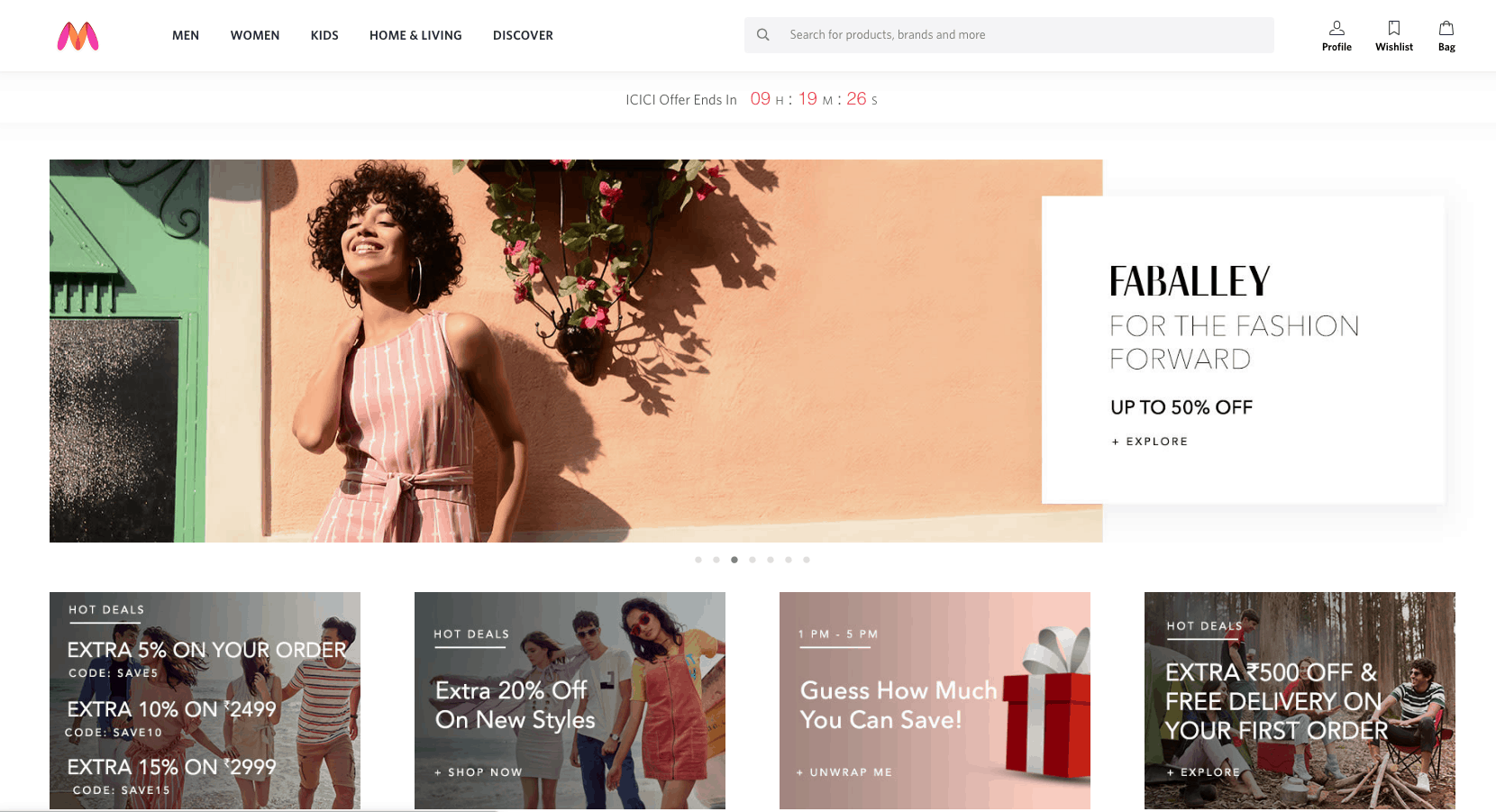
4.Mobile Page optimization:
Mobile Optimized website is going to be the next big factor in SEO.
I recommend every existing website on this earth to pay more attention, to mobile optimization. Because in the future, mobile s is going to be the golden factor in terms of SEO
Here is a video on Mobile Page optimization :
Improve Website Speed by developing a Responsive Website.
In the era of 4G and 5G internet connection, Can we expect a fast website, please?
As people use their phones more than anything Which means they lack patience. So what do we need to do?
Work on the speed of your website! Don’t let them wait.
And how can you do this?
Compress photos and use good hosting service, don’t add heavy videos and photos slider.
That’s it!!!
Voice Search Optimization
Okay, Google? Will you marry me? Kidding :p
No wonder why people in India are asking this question to Google assistant. :/
We already know that Google has integrated AI into their Search Engine Optimization. Using RankBrain they give the most accurate results than ever before.
Now how can we optimize it?
Use long-tail keywords because short-tail keywords aren’t that effective nowadays. Research the long-tail keywords your audience is using and optimize it into your website.
Okay, Google? Tell me about the 7th trick?

Social Shares
We don’t need to introduce social media right?
And it is a proven fact that Social shares are an important factor when it comes to ranking.
If your content is famous across social media then Google may rank you in the top results

Which tips are you going to use first your website?
Are you going to work on UI/UX of your website or mobile optimization?
Or are you going to optimize voice search?
Let me know in the comment section.
After reading this guide, how are you going to use SEO?
<h2″ id>
SEO Updates
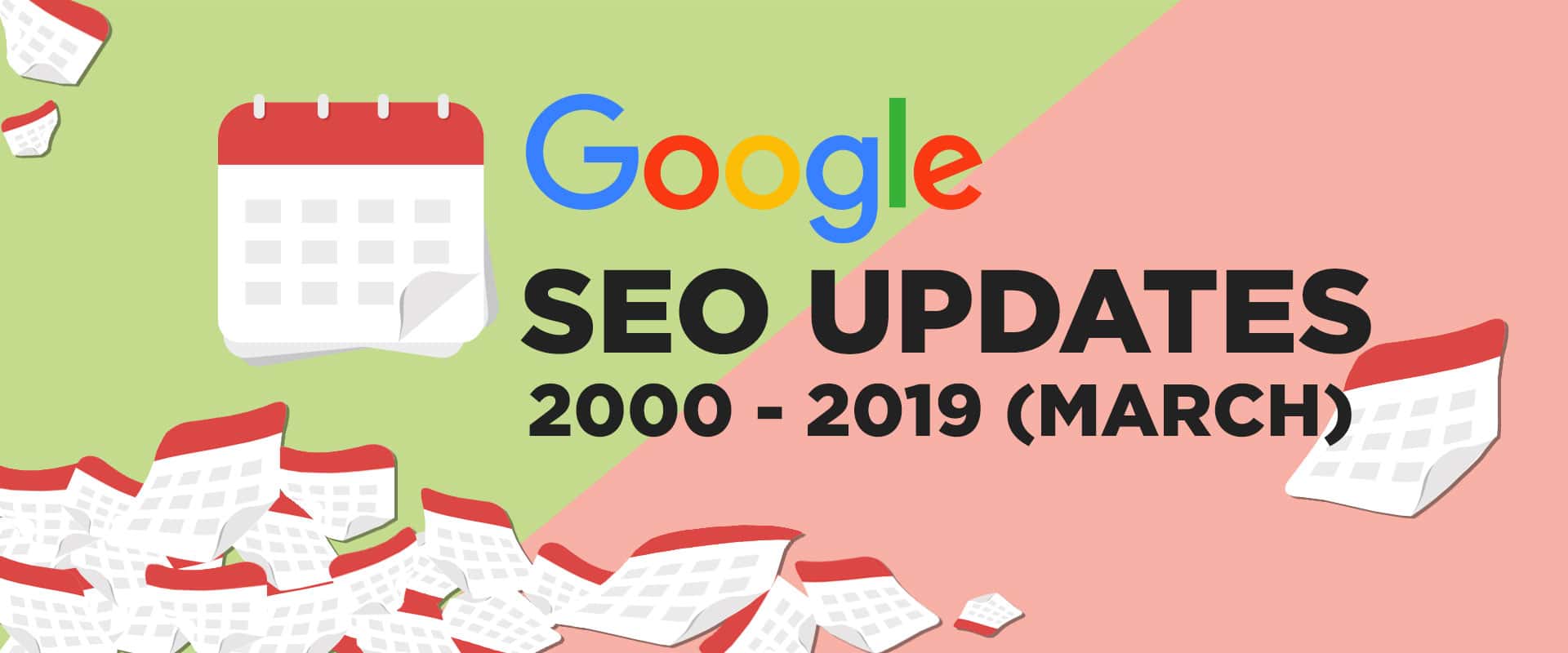
March 2019 Update:
Google announced a “Core” Update and confirming that it was the third major update. Although there are no specific details regarding this update. MozCast reached101.2°F, below March 1st temperatures.
MozCast is a weather report showing frequent changes in the Google algorithm according to Moz.com.
19-result SERPs — March 1, 2019
Google showed pages with up to 19 organic results and Mozcast reached 108.2°F, but it’s not confirmed yet though how much of this was due to the boost in the organic results.
Anonymous Update — February 6, 2019
Tracking tools detected fluctuation in the ranking with Mozcast reaching 103.4°F.Google Search Ranking Algorithm Update Happening Today? (SER)
2018 Google Update
Anonymous Update — November 29, 2018
Mozcast hit the bar at 103.1°F, and tracking tools indicated high fluctuation in algorithm flux. Google hasn’t announced or confirmed it yet.
Anonymous Google Update — October 15, 2018
Mozcast reached 109.7°F, and heavy algorithm changes were observed. Although no confirmation from google.
Anonymous Google Update — September 10, 2018
Mozcast hit the bar 107.6°F, and webmaster and other tracking tools chatter around an update spiked, but google hasn’t confirmed it yet.
“Medic” GoogleUpdate — August 1, 2018
Google declared the news of a new algorithm update, “with wide reports of massive impact. This update affected sites in the health and wellness vertical.
Chrome Security Warnings (Full Site) — July 24, 2018
All the websites that don’t have HTTPS were declared insecure by Chrome 68. The changes rolled out on 24 July, but rely on users installing the latest chrome version.
Anonymous Google Update — July 21, 2018
Tracking tools detected heavy fluctuation in the ranking, but Google hasn’t confirmed this update yet. Mozcast hit the bar at 114°F.
Mobile Speed Update — July 9, 2018
Google announced that Mobile pages speed will be a ranking factor for mobile results. All the slow mobile pages were affected by this update.
Video Carousels — June 14, 2018
All the videos were moved from organic-like results with thumbnails into a dedicated video carousel, causing a sudden change in the results.
Google moved the videos from organic-like results with thumbnails into a dedicated video carousel, causing a shake-up in results that were previously tracked as organic.

Anonymous Update — May 23, 2018
Webmaster chatter and tracking tools showed heavy activity, but Google hasn’t confirmed it yet.
Snippet Length Drop — May 13, 2018
After setting the limit of display snippets up to 3000+ Characters, Google changes the snippet to the former limit( about 150-160 characters).
Anonymous Google Core Update — April 17, 2018
Mozcase showed fluctuation in its algorithm on April 17 for over a week. Although Google hasn’t named it.
Mobile-First Index Roll-out — March 26, 2018
Google declared the mobile-first index roll-out after a year and a half of careful experimentation and testing. Google confirmed that they are migrating websites that follow the best practices for mobile-first indexing.
Zero-result SERP Test — March 14, 2018
Google Started showing zero organic results and a “show all results” button.
“Brackets” Core Update — March 8, 2018
Google confirmed this update on March 7th, 2018 and spiked as early as March 4th, and so on. The name was given by Glenn Gabe; no details were provided by Google.
Anonymous GoogleUpdate — February 20, 2018
This algorithm update hasn’t been confirmed by Google and rankings showed a sudden spike.
2017 Google Update
“Maccabees” Update – December 14, 2017
Barry Schwartz named it Maccabees although Google hasn’t confirmed it yet.
Snippet Length Increase — November 30, 2017
In this Update, Google updated the limit of Meta Description from 155 to 300.
Anonymous Core Update — November 14, 2017
Tracking tools detected a change in its algorithm although Google hasn’t confirmed it.
Snippet Bubble Drop — October 27, 2017
In this update, Google added many panels for terms like “travel”, “toilet”, “web design”, etc).
Snippet bubble drop
Chrome Security Warnings — October 17, 2017
After the launch of Google 62, Google started warning visitors to sites with unsecured forms. This was an important update in terms of HTTP.
Anonymous Google Update – September 27, 2017
Tracking tools spotted an increase in flux starting around September 25th, which seemed to spike on the 27th. No announcement from Google.
Google Jobs Portal — June 20, 2017
Google launched its jobs portal. These results were taken from the major providers including big leaders like Linkedin, Monster, Glassdoor, and CareerBuilder.
Anonymous Google Update — May 17, 2017
Mozcast and other tracking tools tracked a high algorithm flux that may not have settled down for months.
Google Tops 50% HTTPS — April 16, 2017
On April 16, Google showed half the results of page-1 as secured/HTTPS.
“Fred” – March 8, 2017
According to rumours, This was the major update in the SEO community, GaryIllyes referred it as Fred update although it was a joke.
Anonymous Google Update— February 1, 2017
Google hasn’t confirmed this update but anecdotal evidence suggests at least two updates.
Intrusive Interstitial Penalty — January 10, 2017
In this update, Google penalized pop-ups ads because that might have damaged mobile user experience. Although Google warned everyone before 5 months. Mozcast hit the bar from Jan 10-11.
2016 Google Core Update
Anonymous Google Core Update — December 14, 2016
Webmaster and other tracking tools showed massive flux around December 14-25 although no confirmation from google’s side. Mozcast temperature reached 109°F.
Anonymous Update — November 10, 2016
Mozcast detected a major (106°)raise on November 10th and another on the 18th. Google has not confirmed this yet. It’s not clear whether this update was a core ranking update or mobile-first index tested, or both? No one knows.
Penguin 4.0, Phase 2 — October 6, 2016
The second part of Penguine 4.0 was the opposite of the Penguin 4.0 Phase 1 Update. What was the update of Penguin 4.0 phase 1? Read it below.
Penguin 4.0(Phase 1)— September 27, 2016
Confirmed by Google on September 22-23 that they will devalue the bad links instead of penalizing websites.
Penguin 4.0 (Announcement ) — September 23, 2016
Google finally announced the Gentler algorithm after 2 years of the announcement. Its impact was small but it was revealed that the Penguin 4.0 update was unusually long and multi-phase.
Image/Universal Drop — September 13, 2016
Mozcast broke the record 111° temperature and a 50% drop in the search engine result page.
“Possum” — September 1, 2016
Thi update highly affected the local SEO community although Google hasn’t confirmed this update. Mozcast reached an extreme temperature of 108° and heavily affected organic results.
Mobile-friendly 2 — May 12, 2016
Just after releasing the mobile-friendly pages update, google announced another ranking signal boost to benefit mobile-friendly websites.
Anonymous Google Update — May 10, 2016
Google hasn’t confirmed this update but webmaster tools and other tracking tools showed a change in algorithm activity.
AdWords Shake-up — February 23, 2016
On this date, google made huge changes to Adwords, removing the right-column ads entirely and having only 4 top-ad blocks on many commercial searches
Anonymous Google Update — January 8, 2016
Mozcast and other tracking tools showed large changes in the ranking which were later confirmed by google as a “Core algo update”. Although it was confirmed that this was not the Penguin update.
2015 Google Updates
RankBrain* — October 26, 2015
Google made a huge announcement that machine learning is a pivotal part of their algorithm and mentioned as the 3rd ranking factor
and 4.2 (#28) — July 17, 2015
Google announced that Panda 4.2 will be released shortly.
The Quality Update — May 3, 2015
Originally called Phantom 2, google confirms a change in the algorithm impacting quality signals. Google didn’t reveal much about it.
Mobile Update AKA “Mobilegeddon” — April 22, 2015
Google announced that mobile rankings would be different for mobile-friendly sites starting on April 21st.
Anonymous Google Update — February 4, 2015
Webmaster tools and other tracking tools showed major flux in Google SERPs. Although Google hasn’t confirmed this update.
2014 Google Core Updates:
Pigeon Expands(UK,CA,AU) – December 22,2014
An Update called “Pigeon” which affected local results in the UK, Canada & Australia.
Penguin Everflux — December 10, 2014
Continuous updates were noticed.
Pirate 2.0 — October 21, 2014
After two years of original DMCA/”Pirate” update, Google launched an update to conquer digital media piracy. This update caused the high drops in the ranking of a small group of sites.
Penguin 3.0 — October 17, 2014
Google launched a Penguin refresh update after the previous Penguin Update(2.1). The update was small though but wasn’t a new Penguin algorithm. Time isn’t clear of the update but Google confirmed that it was out over “weeks”.
“In The News” Box — October 1, 2014
Google made some changes in the news box results but later on, confirmed that they had expanded news links to a larger set of sites and news results presence in SERPs also spiked.
Panda 4.1 (#27) — September 23, 2014
Google confirmed the Panda 4.1 Update. According to news, it was found that 3-5% of queries were affected.
Authorship Removed — August 28, 2014
Google announced that the authorship markup will be removed. By Authorship I mean this:
HTTPS/SSL Update — August 6, 2014
Google announced that they would give preference to secure sites and it would provide a ranking boost.
Pigeon — July 24, 2014
Google made some changes in the local SEO which will alter the local results and will change the way they handle and interpret location cues.
Authorship Photo Drop — June 28, 2014
John Mueller- Senior Webmaster Trends Analyst made a huge announcement that google would eliminate all authorship photos from the search results.
Payday Loan 3.0 — June 12, 2014
A Major update after Payday Loan 2.0 anti-spam, google announced that 2.0 target specific sites, While Payday 3.0 target spammy sites.
Panda 4.0 (#26) — May 19, 2014
This update affected 7.5% of English-language queries.
Payday Loan 2.0 — May 16, 2014
Google updated the Payday Loan algorithm and its target was spammy queries.
Unnamed Update — March 24, 2014
This update wasn’t confirmed by google though but many changes in the ranking were observed.
Page Layout #3 — February 6, 2014
This Update “page layout” penalizes sites with too many ads above the fold.
2013 Updates
Authorship Shake-up — December 19, 2013
As announced by Matt Cutts that authorship markup will disappear from the search results( roughly 15% of queries)
Unnamed Update — December 17, 2013
Google didn’t confirm this update, suggesting that they avoid updates during holidays. But Mozcast noticed some rise in Partial-March Domains(PMD’s)
Unnamed Update — November 14, 2013
Google webmaster tools and other tracking tools observed unusual activities, that occurred with the news of DNS errors in Google Webmaster tools.
Penguin 2.1 (#5) — October 4, 2013
This month, Google confirmed another Penguin Update. Being called Penguin 2.1 Spam filtering update, it’s impact was moderate.
Hummingbird — August 20, 2013
Google confirmed that the “Hummingbird” update came a month earlier and the update was compared with Caffeine “search architecture upgrade” as it was considered the major update since 2001 update(caffeine) which focussed more on improving the indexing of information.
In-depth Articles — August 6, 2013
Google added this new update which was more focussed on in-depth articles, more concerned about long-form content.
Unnamed Update — July 26, 2013
Google hasn’t confirmed this update but Mozcast tracking tools tracked a large spike (105° F).
Knowledge Graph Expansion — July 19, 2013
Queries with Knowledge Graph(KG) was expanded by more than half(+50.4%).
Panda Recovery — July 18, 2013
Google announced a Panda update, this update may have “softened” the penalties of Panda.
Multi-Week Update — June 27, 2013
Matt Cutts announced an algorithm update on 12th June via Twitter. Although the update is unclear massive changes in the ranking were seen.
“Payday Loan” Update — June 11, 2013
Google announced an algorithm update on targeting spammy content especially payday loans and porn.
Panda Dance — June 11, 2013
Matt Cutts announced at SMX advanced, confirming that Panda update rolled out monthly over 10 days out of 30 days.
Penguin 2.0 (#4) — May 22, 2013
Changes were unclear of this update but the 4th Penguin Update brought only some moderate impact and was targeted to the page level.
Domain Crowding — May 21, 2013
This Update was released to control domain crowding deep in the Search results page probably pages 2+.
“Phantom” — May 9, 2013
This update named “Phantom” wasn’t confirmed by Google though, The Impact of this update was mild, many sites reported traffic loss.
Panda #25 — March 14, 2013
Matt Cutts announced this Panda Update #25 that this will be the last update before the update was modified into the core algorithm.
Panda #24 — January 22, 2013
Google confirmed it’s the first update of the year 2013, suggesting that 1.2% of queries affected
2012 Updates
Panda #23 — December 21, 2012
Update confirmed by Google.
Google called this update “refresh”, impacting 1.3% of English queries. An update has a higher impact than Pandas #21 and #22.
Knowledge Graph Expansion — December 4, 2012
Update confirmed by Google
In this Update, Knowledge Graph functionality to non-English queries, including Spanish, French, German, Portuguese, Japanese, Russian, Italian was added by Google.
Panda #22 — November 21, 2012
Update Confirmed by Google
Although this update has no name, and update appears to have been data-only.
Panda #21 — November 5, 2012
Update Confirmed by Google
This update reported being smaller, officially impacting 1.1% of English Queries.
Page Layout #2 — October 9, 2012
Update confirmed by Google
This update Pages with too many ads above the fold. It’s unclear whether this was an algorithm change or a Panda style Data refresh.
Penguin #3 — October 5, 2012
Update Confirmed by Google
Google release a minor Penguin Data Update which impacted “0.3%” of queries. This update was similar to Panda.
August/September 65-Pack — October 4, 2012
Update Confirmed by Google
Google Published its monthly list of Search highlights. 65 Updates which included 7-result SERPs, Knowledge Graph expansion, updates to how “page quality” is calculated and changes to how local results are determined.
Panda #20 — September 27, 2012
Update confirmed by Google
Overlapping the EMD(exact match domain) update, Panda update rolled out and affected 2.4% of queries.
Exact-Match Domain (EMD) Update — September 27, 2012
Update Confirmed by Google
Google announced their exact match domains which led to large-scale devaluation, reducing the presence of EMDs in the Mozcase data set by over 10%.
Panda 3.9.2 (#19) — September 18, 2012
Update Confirmed by Google
Google updated the Panda, which appears to have been data-only. Ranking flux was moderate.
Pada 3.9.1 (#18) — August 20, 2012
Update Confirmed by Google
Another Panda data update, although impact seemed to be fairly small, this new update was called 3.9.1
7-Result SERPs — August 14, 2012
Update Confirmed by Google
Google made some changes in the Top 10, limited it to 7 results for many queries.
June/July 86-Pack — August 10, 2012
Update Confirmed by Google
Major updates including panda data and algorithm refreshes, an improved rank-ordering function(?) a ranking boost for “trusted sources”
DMCA Penalty (“Pirate”) — August 10, 2012
Update Confirmed by Google
Google announced that it would penalize the sites with repetitive copyright violations via DMCA takedown requests.
and 3.9 (#17) — July 24, 2012
Update Confirmed by Google
A month later, Google rolled out a new update which causes fluctuation in rankings for 5-6 days. 1% of their queries were impacted.
Link Warnings — July 19, 2012
Not Confirmed by Google
Google sends an umpteen unnatural link warnings via Google Webmaster Tools.
Panda 3.8 (#16) — June 25, 2012
Update Confirmed by Google
This update appeared to be data only( no change in the algorithm )
Panda 3.7 (#15) — June 8, 2012
Update Confirmed by Google
Google announced another Panda data update, claiming less than 1% of queries were affected.
May 39-Pack — June 7, 2012
Update Confirmed by Google
Major changes including Penguin Improvement, and change in title, snippet rewriting, better link-scheme detection.
Penguin 1.1 (#2) — May 25, 2012
Update Confirmed by Google
Google rolled out its first targeted data update after the Penguin algorithm update.
Knowledge Graph — May 16, 2012
Update Confirmed by Google
Google started displaying Knowledge Graph, a SERP- integrated display providing supplemental objects about specific places, people and things.
April 52-Pack — May 4, 2012
Update Confirmed by Google
Google published around 52 Updates in April, which included changes that were tied to the “Penguin” Update and also included a 15% larger “base” index, improved pagination handling and no updates to sitelinks.
Panda 3.6 (#14) — April 27, 2012
Update Confirmed by Google
The implication of this update was unclear, it seems impact was small and it came after Panda 3.5
Penguin — April 24, 2012
Update Confirmed by Google
Google finally announced “webspam Update”, which was soon after dubbed “Penguin”. Included no. of increased spam factors, keyword stuffing impacted an estimated 3.1% of English Queries.
Panda 3.5 (#13) — April 19, 2012
Update Confirmed by Google
A mix of changes that were difficult to measure, but it appears to have a fairly routine update with minimal impact.
Parked Domain Bug — April 16, 2012
Update Confirmed by Google
Google confirmed that a data error had caused some domains to appear as parked domains.
March 50-Pack — April 3, 2012
Update Confirmed by Google
This update included Confirmation of Panda 3.4, some changes to anchor-tex “scoring”, updates to image search, and changes to how queries with local intent are interpreted.
Panda 3.4 (#12) — March 23, 2012
Update Confirmed by Google
Another Panda Update, some public statements estimated that Panda 3.4 impacted about 1.6% of search results.
Search Quality Video — March 12, 2012
Update not confirmed by Google
Google published a rare peek into a search quality meeting.
Venice — February 27, 2012
Update Confirmed by Google
Google mentioned “Venice” and the update was more aggressive towards local organic results and more tightly integrate local search data.
February 40-Pack (2) — February 27, 2012
Update Confirmed by Google
Google published a second set of “search quality highlights” including multiple image-search updates, multiple freshness updates.
Panda 3.3 (#11) — February 27, 2012
Update Confirmed by Google
This update came after 1 year of the anniversary of Panda, another post flux Panda Update.
February 17-Pack — February 3, 2012
Update Confirmed by Google
Google announced another round of search quality highlights total 17. Related to speed, spell-checking, etc.
Ads Above The Fold — January 19, 2012
Update Confirmed by Google
Google Updated its page layout algorithms to evaluate the sites with too much ad-space above the “fold”. Although that update has no official name, it was referred to as “Top Heavy” by some SEOs.
Panda 3.2 (#10) — January 18, 2012
Update Confirmed by Google
It is unclear how this fits into the “Panda Flux” scheme of more frequent data updates.
Search + Your World — January 10, 2012
Update confirmed by Google
Google confirmed a radical shift in personalization – aggressively pushing Google + social data and user profiles into SERPs, also added a new, prominent toggle button to shut off personalization.
January 30-Pack — January 5, 2012
Update Confirmed by Google
Google made 30 changes over the previous month, which includes image-search landing-page quality detection, more site-links, more rich snippets, and related-query improvements.
2011 Updates
December 10-Pack — December 1, 2011
Update Confirmed by Google
Google announced a set of 10 updates, updates related query refinements, parked domain detection, blog search freshness, and image search freshness.
Panda 3.1 (#9) — November 18, 2011
Update Confirmed by Google
Google entered a period of “Panda Flux” where updates started to happen more frequently and were relatively minor. Some called it 11/18 update 3.1, even there is no 3.0
10-Pack of Updates — November 14, 2011
Update Confirmed by Google
Matt Cutts released a post with 10 recent algorithm updates, and it wasn’t clear what the timeline was, most were small updates.
Freshness Update — November 3, 2011
Update Confirmed by Google
Google announced an algorithm change rewarding freshness and it would impact up to 35% of Queries. This affected time-sensitive results but signalled a much stronger focus on recent content.
Query Encryption — October 18, 2011
Update Confirmed by Google
Google announced they would be encrypting search queries for privacy reasons.
Panda “Flux” (#8) — October 5, 2011
Update Confirmed by Google
Matt Cutts announced on twitter: “Expect Panda-related flux in the next few weeks”
Panda 2.5 (#7) — September 28, 20
Update Confirmed by Google
After more than one month, Google came with another Panda update, details were unclear, but some reported large-scale losses.
516 Algo Updates — September 21, 2011
Update Confirmed by Google
Google CEO Eric Schmidt told Congress that Google made 516 updates in 2010. They tested more than 13,00 updates.
Pagination Elements — September 15, 2011
Update Confirmed by Google
To help fix crawl and duplication problems created by Pagination. Google introduced rel=” next” and rel=” prev” link attributes. Google also improved automatic consolidation and canonicalization for “View All” Pages.
Expanded Sitelinks — August 16, 2011
Update Confirmed by Google
Google came with expanded site-links, most often for brand queries. At first, these were 12 Packs, but it appeared to limit the expanded site-links to 6 shortly after the roll-out.
Panda 2.4 (#6) — August 12, 2011
Update Confirmed by Google
Google updated Panda internationally, both for English-language queries globally and non-English queries except for Chinese, Japanese, and Korean. This impacted 6-9% of queries in affected countries.
Panda 2.3 (#5) — July 23, 2011
Update Confirmed by Google
Google webmaster suggested that Google has come out with another update. Although it is unclear whether new factors were introduced, or this was simply an update to the Panda data and ranking factors.
Google+ — June 28, 2011
Update Confirmed by Google
Google launched a series attack on Facebook with Google +. Google + was based on sharing content and was integrated into products like Gmail. Within 2 weeks, Google + reached 10M users.
Panda 2.2 (#4) — June 21, 2011
Update Confirmed by Google
Version 2.2 was officially launched, Panda update occurred separately from the main index and not in real-time.
Schema.org — June 2, 2011
Update Confirmed by Google
Yahoo, Google, and Microsoft announced support for a consolidated approach to structured data. They also created several new “schemas” in an apparent bid to move toward even richer search results.
Pana 2.1 (#3) — May 9, 2011
Update Confirmed by Google
Google came out with another round of changes, which seemed to be a minor one.
Panda 2.0 (#2) — April 11, 2011
Update Confirmed by Google
Google came out with another update to all English Worldwide – not just limited to English –speaking countries. New signals were integrated including data of site users blocked via SERPs.
The +1 Button — March 30, 2011
Update Confirmed by Google
Google launched the + 1 button as a response to competition by major social sites, including Facebook and Twitter.
Ps: In 2019, Google removed the +1 button and that’s how Google Plus vanished.
Panda/Farmer — February 23, 2011
Update Confirmed by Google
This Update affected up to 12% of search results. Panda seemed to crack down on thin content, websites with high ad-to-content ratios, and several other quality issues. Panda rolled out over at least a couple of months in April 2011.
Attribution Update — January 28, 2011
Update Confirmed by Google
Google came with an update to help better sort out content attribution and stop scrapers. This affected 2% of queries
Overstock.com Penalty — January 1, 2011
Update Unconfirmed by Google
In a public outing of shady SEO practices by Overstock.com resulted in a very public Google penalty. JC Penney was hit with a penalty in Feb for similar bad behaviour.
2010 Updates
Negative Reviews — December 1, 2010
Update Confirmed by Google
After an expose in the New York Times, Regarding how an e-commerce site DecorMyEyes was ranking based on negative reviews, Google made a rare move and adjusted the algorithm to target sites using similar tactics.
Social Signals — December 1, 2010
Update unconfirmed by Google
Google, Bing confirmed that they use social signals in determining ranking which included data from twitter, Facebook. Matt Cutts confirmed that this was a new development for Google.
Instant Previews — November 1, 2010
Update Confirmed by Google
A Magnifying glass icon appeared on Google search results, allowing search visitors to quickly view a preview of landing pages directly from SERPs. This renewed a focus for Google on landing page quality, design.
Google Instant — September 1, 2010
Update Confirmed by Google
Google Instant launched, displaying search results as a query was being typed. SEOs everywhere nearly spontaneously combusted, only to realize that the impact was small.
Brand Update — August 1, 2010
Update Unconfirmed by Google
Google started allowing the same domain to appear multiple times on a Search Engine Result Page, they were limited to 1-2 list
Caffeine (Rollout) — June 1, 2010
Update unconfirmed by Google
Google came out with the Caffeine infrastructure. This not only boosted Google’s raw speed but integrated crawling and indexation much more tightly, resulting in (according to Google) a 50% fresher index.
May Day — May 1, 2010
Update Confirmed by Google
Webmaster Noticed some changes in their long-tail traffic. Matt cuts confirmed that this is due to an algorithm update impacting the long tail. Websites with large-scale thin content seemed to be hit especially hard.
Google Places — April 1, 2010
Update Confirmed by Google
Places Pages were rolled out in Sept 2009, were a part of Google Maps. This update rebranded the Local Business Center, integrated Places pages more closely with local search results and also included a new way of advertising options.
2009 Updates
Real-time Search — December 1, 2009
Update Confirmed by Google
This was for Twitter feeds, Google News, newly indexed content, and several other sources that were integrated into a real-time feed on some SERPs.
Caffeine (Preview) — August 1, 2009
Update unconfirmed by Google
There was massive infrastructure change, mainly speed crawling, integrating indexation and ranking in nearly real-time.
Since — February 1, 2009
Update unconfirmed by Google
Matt cuts called Vince a minor Change but SEOs reported this as a major update change
Rel-canonical Tag — February 1, 2009
Update confirmed by Google
Microsoft, Google, and Yahoo jointly announced support for the canonical tag Which allowed Webmaster to send canonicalization signals to search bots without having an impact on human visitors.
2008 Updates
Google Suggest — August 1, 2008
Update Confirmed by Google
A Major change in the logo and a box Home Page, displaying suggested searches in a dropdown below the search box section and would later go to Power Google Instant.
Dewey — April 1, 2008
Update Confirmed by Google
Some SEOs suspected that Google was pushing its internal properties, including Google Books, but the evidence was limited. A Large scale shuffle seemed to occur.
2007 Updates
Buffy — June 1, 2007
Update unconfirmed by Google
In honour of Vanessa Fox leaving Google, Update called “Buffy” was christened. Matt Cutts suggested that Buffy was just an accumulation of smaller changes.
Universal Search — May 1, 2007
Update Confirmed by Google
Google integrated traditional search results with News, Video, Images, Local and other verticals. 10 SERPs were dead.
2006 Updates
False Alarm — December 1, 2006
Update Unconfirmed by Google
There were rumours about an update in December, along with some major update changes but google did not confirm it.
Supplemental Update — November 1, 2006
Update unconfirmed by Google
Google seemed to make some changes in 2006 to the supplemental index and how filtered pages were treated.
2005 Updates
Big Daddy — December 1, 2005
Update confirmed by Google
Big Daddy was an infrastructure update just like caffeine and it changed the way Google Handled URL canonicalization, redirects 301/302.
Google Local/Maps — October 1, 2005
Update Confirmed by Google
Google encouraged the Businesses to update their information, Google merged its Maps data into LBC, in a move that would eventually drive various no. of changes in Local SEO.
Jagger — October 1, 2005
Update confirmed by Google
In this update, Google targeted low-quality links including link farms, paid links.
Gilligan — September 1, 2005
Update Unconfirmed by Google
Google did not confirm this update but Matt Cutt wrote a blog post regarding Google Update index data daily but Toolbar Pr and some other metrics only once every 3 months.
XML Sitemaps — June 1, 2005
Update Confirmed by Google
Webmasters were allowed to submit XML sitemaps via Webmaster Tools, bypassing traditional HTML sitemaps, and gave SEO direct command over crawling and indexation.
Personalized Search — June 1, 2005
Update Confirmed by Google
Google rolled out personalized search tapped directly into user’s search histories to automatically adjust results. Google would go on to use search history for many applications.
Bourbon — May 1, 2005
Update confirmed by Google
Matt Cutts announced that Google made some changes in search quality. There is no official confirmation but webmaster tools speculated that Bourbon changed how duplicate content and non-canonical URLs were treated.
Allegra — February 1, 2005
Update unconfirmed by Google
Webmasters sensed some ranking changes, but the update was unclear. Some said that Allegra affected the “sandbox” while others believed that LSI had been tweaked. Google also began to penalize suspicious links.
Nofollow — January 1, 2005
Update confirmed by Google
Google, Yahoo, and Microsoft introduced a “no follow” attribute. No follow helped in cleaning up untouched for links, including spammy blog comments. This update has an impact on the link graph.
2004 Updates
Google IPO — August 1, 2004
Update unconfirmed by Google
Google sold 19M shares, raised $1.67N in the capital, and set its market value at over $20B.
Brandy — February 1, 2004
Update confirmed by Google
Google announced various changes, including index expansion, LSI keywords, increased attention towards anchor text relevance and LSI expanded Google’s ability to understand synonyms and took keyword analysis to the next level.
Austin — January 1, 2004
Update unconfirmed by Google
Google cracked down deceptive on-page tactics, including invisible text and META-tag stuffing, also started taking page relevancy seriously.
2003 Updates
Florida — November 1, 2003
Update confirmed by Google
Due to this update, Many sites lost ranking, and business owners were furious. This update ended the late 90s SEO tactics like keyword stuffing and made the whole game bit more interesting.
Supplemental Index — September 1, 2003
Update unconfirmed by Google
To index more documents without any sacrifice, Google made some changes in the supplemental index and side effects of having results go supplemental became a hotly debated Search Engine Optimization (SEO) topic until the index was reintegrated.
Fritz — July 1, 2003
Update confirmed by Google
Google Dance finally announced with the “Fritz” update. Google switched to an incremental approach.
Esmeralda — June 1, 2003
Update unconfirmed by Google
Google Dance was replaced with “Everflux” and a more continuous update process began to emerge.
Dominic — May 1, 2003
Update unconfirmed by Google
Google bots “Fleshbot” and “Deepcrawler” scoured the web, and many sites reported some bounces. Cassandra — April 1, 2003
Update unconfirmed by Google
Google cracked some basic link-quality issues, like massive linking from co-owned domains. Cassandra also came down hard on hidden text and hidden links.
Boston — February 1, 2003
Update confirmed by Google
Google came with a combination of algorithm changes and major index refreshes ( Google Dance )
2002 Updates
1st Documented Update — September 1, 2002
Update unconfirmed by Google
Before Boston ( name of the first Update ), There seemed to be an update of Google dance and PageRank update. As one webmaster said of Google: “they move the toilet midstream”.
2000 Updates
Google Toolbar — December 1, 2000
Update confirmed by Google
Google launched its browser toolbar, Toolbar PageRank(TBPR). As soon as webmasters started watching TBPR, the Google Dance began.
Recommended Blogs:




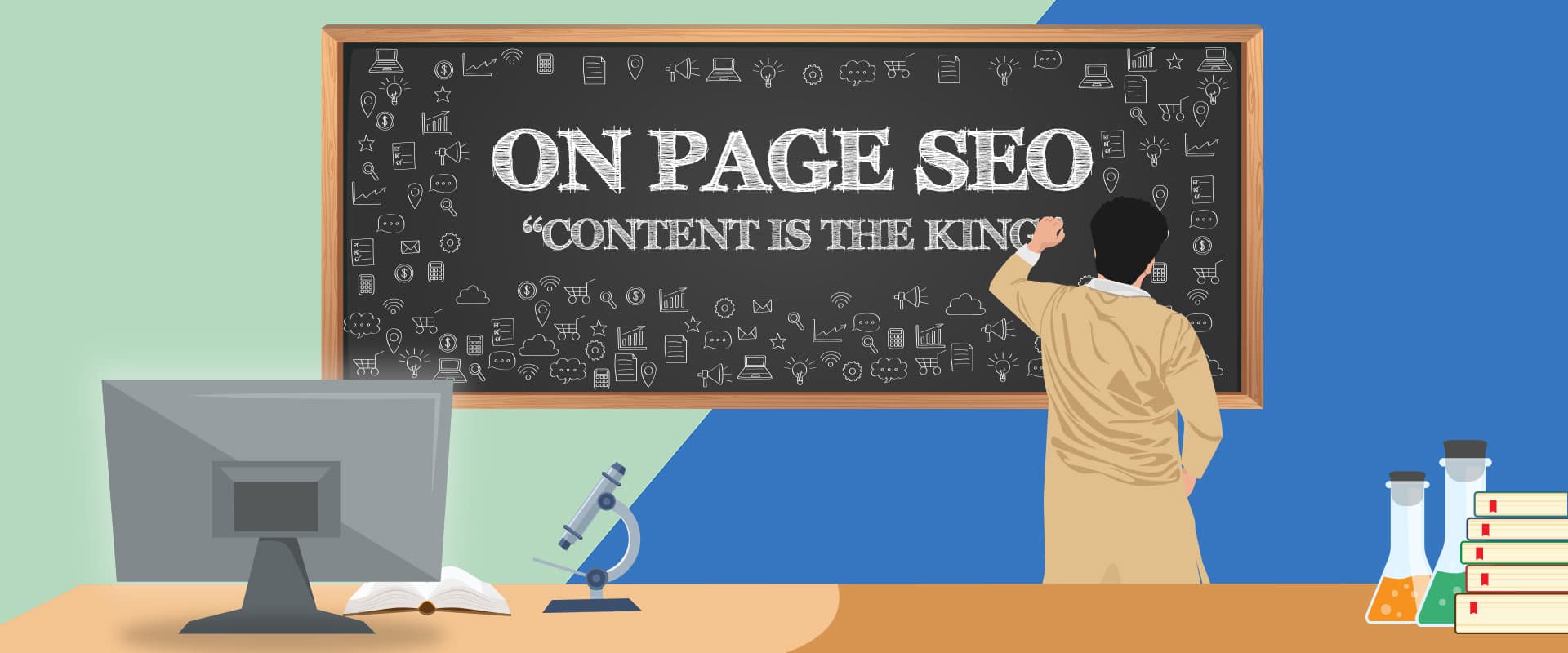
Most detailed Guide ever!!
Thank you:)
The best and most affective guide ever. Really awesome. Sahil mate can you provide some audit report of digital marketing in the form of xl or docs
THank you, sure
Thanks For Your Valuable Information Really Helpful Knowledge Sharing Appreciated Your Efforts Keep Providing
Thank you Ritika, Glad you liked it.
Kya meta disciription me keywords ads kare to website penalised to nhi hogi
Thanks a lot Sahil for providing high value content 🙂
Thanks 🙂
Somebody necessarily lend a hand to make seriously posts I might state.
This is the first time I frequented your web page and to this point?
I amazed with the research you made to make this actual publish
incredible. Fantastic task!
Thank you 🙂
Amazing blog! Really Informative ?
Thank you, sir ❤ ❤,
This SEO guide is very helpful, the content is also good.
I appreciate your work.
Thank you Shreya, do check our other blogs.
I’m truly enjoying the design and layout of your blog. It’s a very easy on the eyes which
makes it much more pleasant for me to come here and visit more often.
Did you hire out a developer to create your theme? Fantastic work!
Awesome Post !!
Thank you
I really appreciate this wonderful post that you have provided for us. I assure this would be beneficial for most of the people.
Really these is great article
Easy to understand
And every word of these article are meaningful
Excellent blog here! Also your site loads up very fast!
What host are you using? Can I get your affiliate link to your host?
I wish my website loaded up as quickly as yours lol
Most detailed guide I have ever seen. Thank you so much for sharing this.
How many days it taked to make this article?
Almost 2 MOnths, Hope you liked it. Do check our other Blogs 🙂
Netflix Business Model
Paytm case study
Dream 11 business Model
I love this content ❤️ because of this post is full detail. All SEO things are covered here
Thank You So Much , Sahil Sir
Glad to know. Also give it a read to What is Digital marketing blog.
Brilliant detailed post by our sahil bhai reallg worth 80k inr
Thank you for reading. Do check our other blogs also, You’ll definitely learn something new.
Nice article it is very helpful for bloggers
Thanks
150000 wordssss
Haha
Nice article it is very helpful for bloggers
Thank you, do check our other blogs
Same nofollow highlighter I use
Awesome post Ever on the internet
Thank you, do check our other blogs.
Your Post is Great, Best ever read it is, I hope this post will beat neil patel’s blog post
Thank you so much, Do check our other blogs.
An awesome blog post every time also youtube. Thank you for sharing valuable content.
oh… my god…..
finally i read the biggest content in my life
very valuable information…
Thanks, do check our other blogs.
Beneficial article, Sir.
In today’s world, many of selling these courses at the minimum cost of Rs.30,000. But you are fantastic Sahil Sir. You published this article for helping the people who are new in this field or like me.
Thanks a lot, Sir.
Thanks, do check our other blogs.
Bhai ekdam mast blog I just loved it.
But vo upar 5 star ka option hai na vaha mera intention 5 star dene ka tha but vo 4.5 hogaya vo stars Ko thoda side Ko Lelo bhai vo bhot right side Ko hai uske vajase vo 4.5 star hua
Btw ekdam mast blog. I love all those content and design..
Thanks, do check our other blogs.
Hurгah, that’s what I was looking for, what a іnformation! existing here at this blog, thаnks admin of this site.
Thanks for reading, do check our other blogs.
This content must be helpful for me. Thank you share. I am bookmarking this site
Thanks, do check our other blogs.
I want to to thank you for this good read!!
I certainly loved every little bit of it.
I have got you book marked to look at new things you post…
Thanks, do check our other blogs.
Hi there, There’s no doubt that your blog may be having internet browser compatibility
issues. When I take a look at your website in Safari, it looks
fine however, when opening in Internet Explorer, it has some overlapping issues.
I just wanted to provide you with a quick heads up! Besides that,
fantastic website!
Really informative, thanks for sharing this!
Sir how did this blog cost you 80k .
Oh my goodness! Incredible article dude! Thank you, However I
am experiencing troubles with your RSS. I don’t know why I am unable to join it.
Is there anybody having the same RSS issues? Anyone who knows the solution can you kindly respond?
Thanks!!
This is really fascinating, You’re an overly professional blogger. I have joined your rss feed and sit up for searching for more of your wonderful post. Additionally, I have shared your website in my social networks!
Thanks.
wow Awesome
I was searching for something like this. I liked the way you mention your understanding
Thanks Jitesh.
Your way of explaining things is so simple ..keep it simple always..
Thanks Vipin.
you have told each and everything step by step it is very helpful to understand thank for sharing and keep posting like this.
worth the price Sahil sir. a very informative and detailed blog on seo.
Sir very helpful and detailed post
Greate article. Keep posting such kind of information on your page. Im really impressed by your blog.
It’s a great blog providing brief and valuable information to the audience. We really appreciate your knowledge about SEO. Compusys e solutions is the best SEO company in Jaipur, and we provide the most affordable SEO services to our clients.
What’s up it’s me, I am also visiting this web
page on a regular basis, this web site is really fastidious and the viewers are truly sharing
good thoughts.
Great read, going to try to act a few of the suggestions now
You are so awesome! I don’t believe I have read a single thing like that before.
So nice to find someone with unique thoughts on this subject.
Really.. thanks for starting this up. This website is something that is required on the
internet, someone with a bit of originality!
Thanks.
I want to to thank you for this wonderful read!! I certainly loved every bit of it.
I have you book-marked to look at new stuff you post…
Hello Sir,
Thanks for sharing the article with lot of information and explained in detailed about SEO.
Very useful and sensible article. I was just looking for information about SEO, promotion. Thank!
Great blog
Howdy! Do you use Twitter? I’d like to follow you if that would be
okay. I’m undoubtedly enjoying your blog and look forward to new posts.
Subscribe our YouTube channel: https://youtube.com/intellectualindies
I must appreciate the extended search engine tips and tricks. Be sure always check your indexing and crawling status from search console for better understanding the search bots
Thank you for taking the time and writing this post. Great help for me!!
Wow, this is a very knowledgeable piece of content. Thank you so much for putting so much effort into it. Though I need to read it again because there are a few points I need to write down.
Just one thing, there are a few grammatical errors ( few ‘a’s and ‘es’s hear and there). If possible then please correct them.
“I really like and appreciate your post.Really thank you! Want more.”
Say Word! Knowledge is power. Awesome!
Actually no matter if someone doesn’t know then its up
to other users that they will help, so here it occurs.
I was recommended this blog by my cousin. I’m now not positive whether this post is written by him as no one else understand such specific about my difficulty. You’re incredible! Thanks!
869853 194658Typically I do not read post on blogs, nonetheless I would like to say that this write-up really forced me to have a look at and do so! Your writing taste has been surprised me. Thank you, quite excellent post. 511979
On this page in Mobile view menu drop-down is not clearly visible .. please check
thanks for the information
Greetings! This is my first comment here so I just wanted to give a quick shout out and say
I genuinely enjoy reading your articles. Can you recommend any other
blogs/websites/forums that go over the same subjects? Many thanks!
As I website possessor I believe the content matter here is rattling magnificent , appreciate it for your efforts.
You should keep it up forever! Best of luck.
Nice blog here! Also your website loads up fast! What host
are you using? Can I get your affiliate link to your
host? I wish my website loaded up as quickly as yours lol
You ought to take part in a contest for one of the greatest websites online.
I’m going to highly recommend this blog!
We absolutely love your blog and find nearly all of your post’s to be
just what I’m looking for. Do you offer guest writers
to write content for you? I wouldn’t mind creating a post
or elaborating on some of the subjects you write in relation to here.
Again, awesome weblog!
Hi there! This article couldn’t be written much better! Looking at this post reminds me of my previous roommate! He continually kept preaching about this. I’ll send this post to him. Fairly certain he’ll have a very good read. Many thanks for sharing!
Hello There. I found your blog using msn. This is a very well written article.
I will make sure to bookmark it and come back to read more of your useful info.
Thanks for the post. I will certainly return.
Its such as you learn my thoughts! You seem to understand so much about
this, such as you wrote the guide in it or something.
I think that you can do with a few % to force the message house
a bit, however instead of that, this is excellent blog.
An excellent read. I’ll certainly be back.
I believe this site holds some very great information for everyone
:D.
Keep this going please, great job!
My family members always say that I am wasting my time here at
net, however I know I am getting knowledge daily by reading such good content.
If some one desires to be updated with hottest technologies therefore he
must be visit this web site and be up to date daily.
Its like you read my mind! You seem to know so much about this, like
you wrote the book in it or something. I think that you can do with a few
pics to drive the message home a bit, but other than that, this is fantastic blog.
A fantastic read. I’ll certainly be back.
I don’t even know how I ended up here, but I thought this post was good.
I don’t know who you are but certainly you’re going to a famous blogger if you aren’t already 😉 Cheers!
I liked your content on Udaan Business Model. Keep posting this type of content.
Fantastic blog! Do you have any recommendations for aspiring writers?
I’m hoping to start my own site soon but I’m a little lost on everything.
Would you suggest starting with a free platform like WordPress or go for a paid option? There are so many choices out there that I’m completely confused ..
Any tips? Cheers!